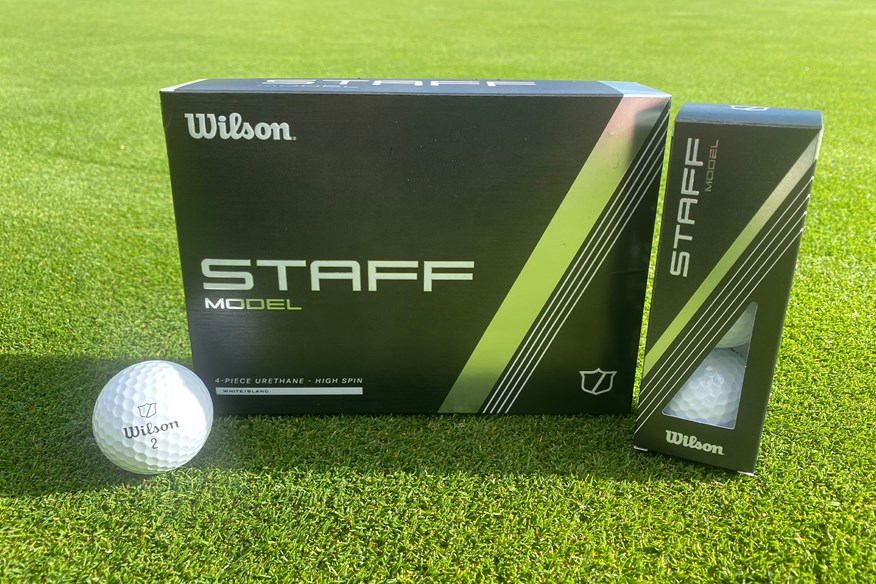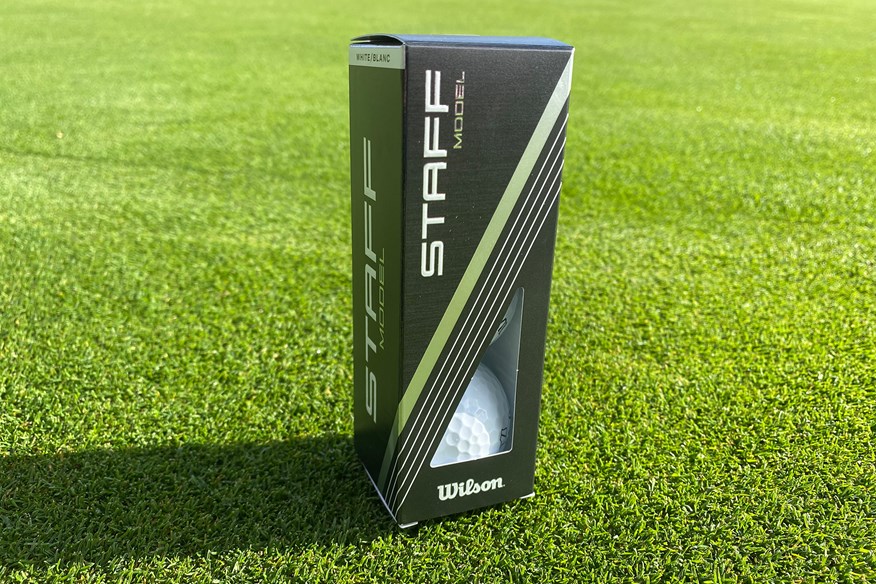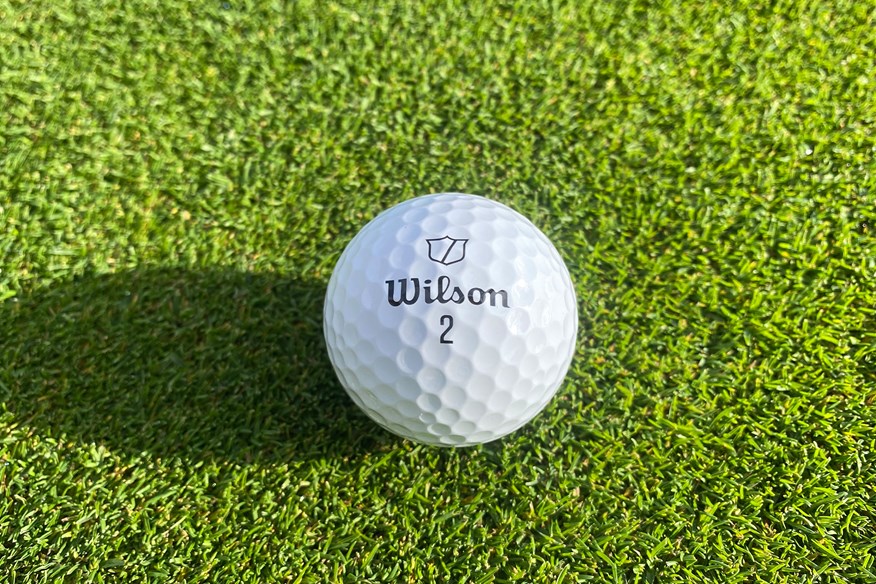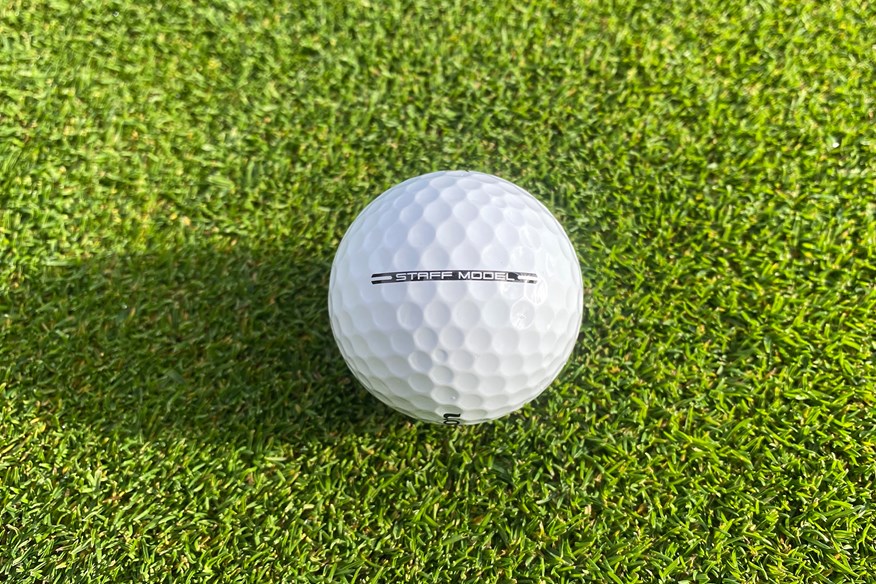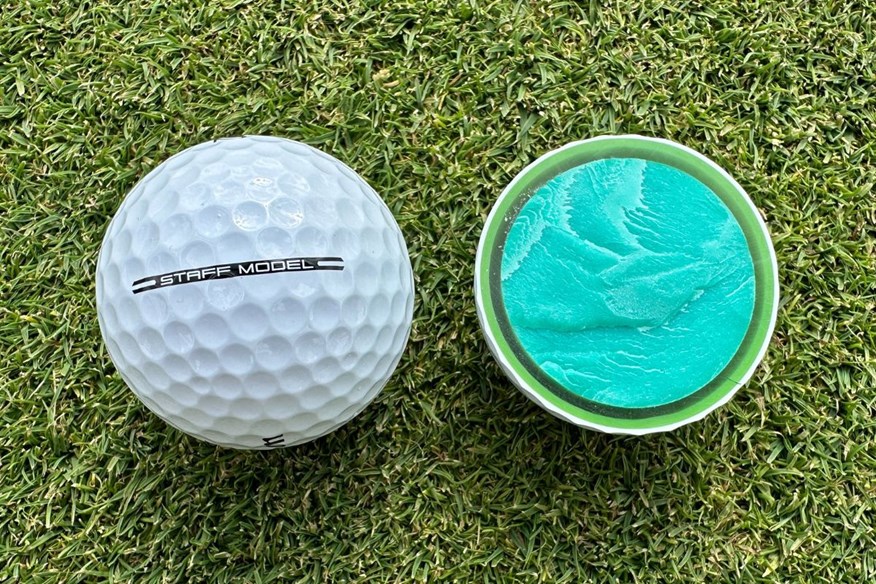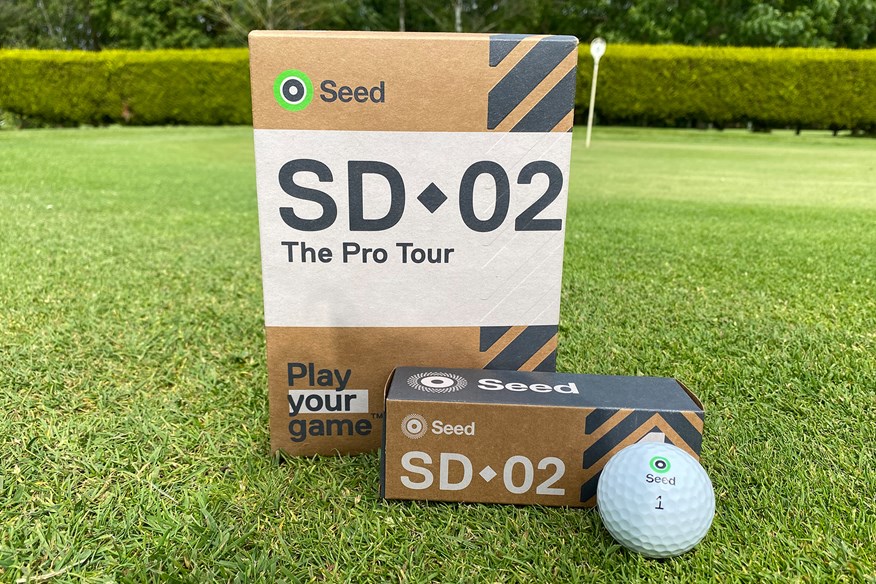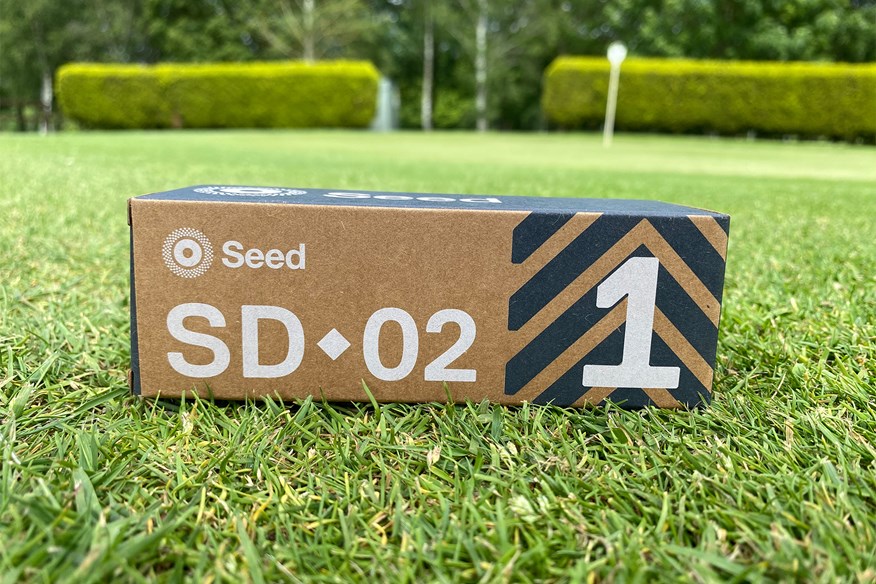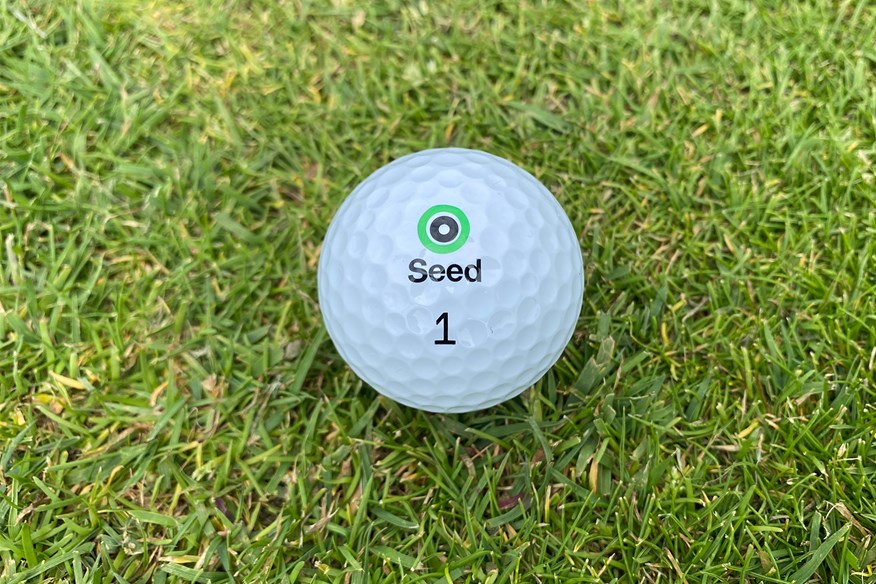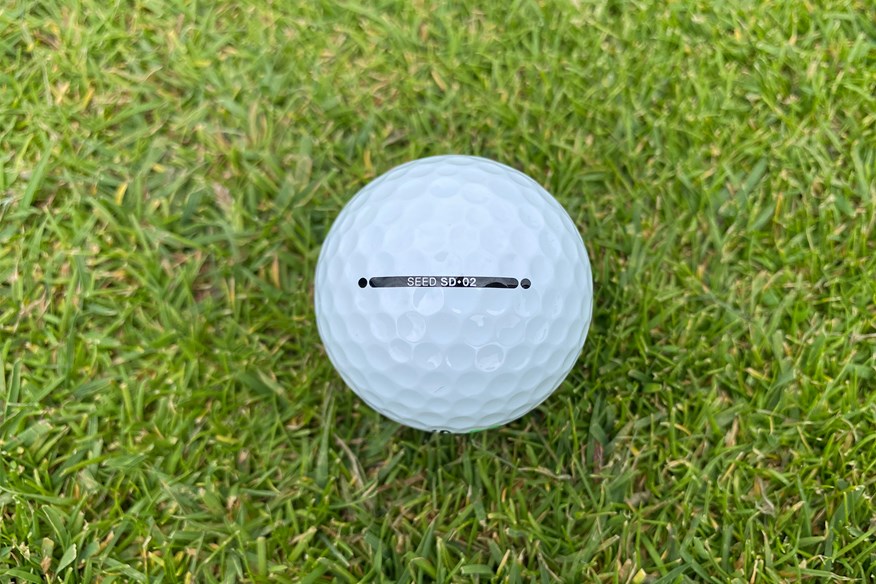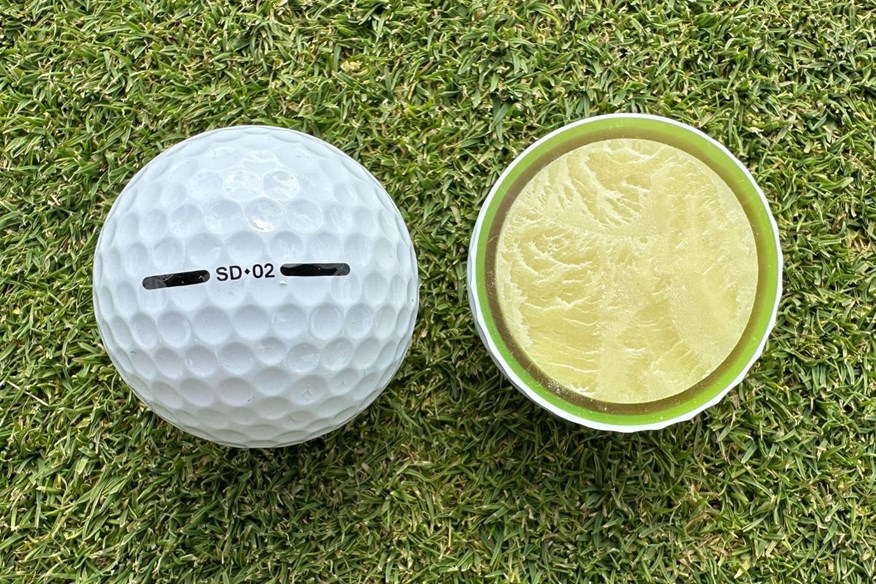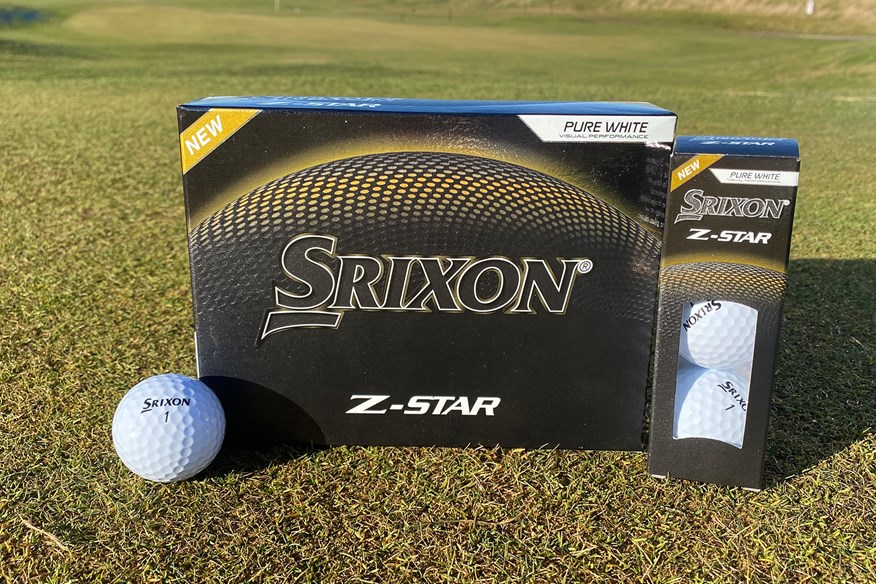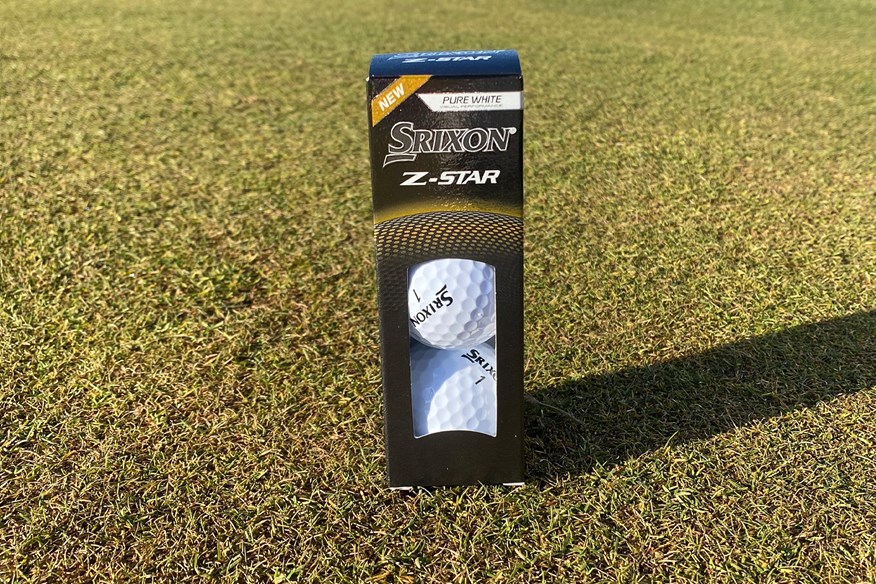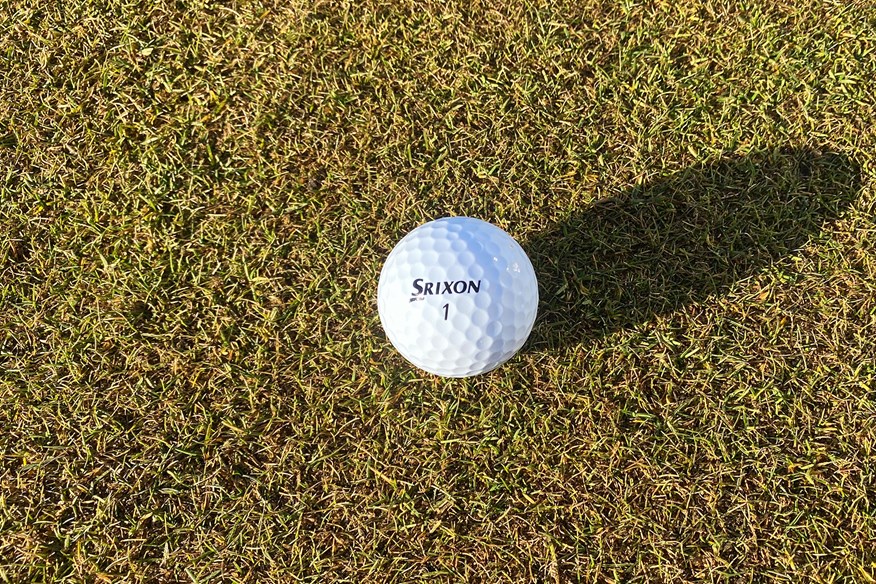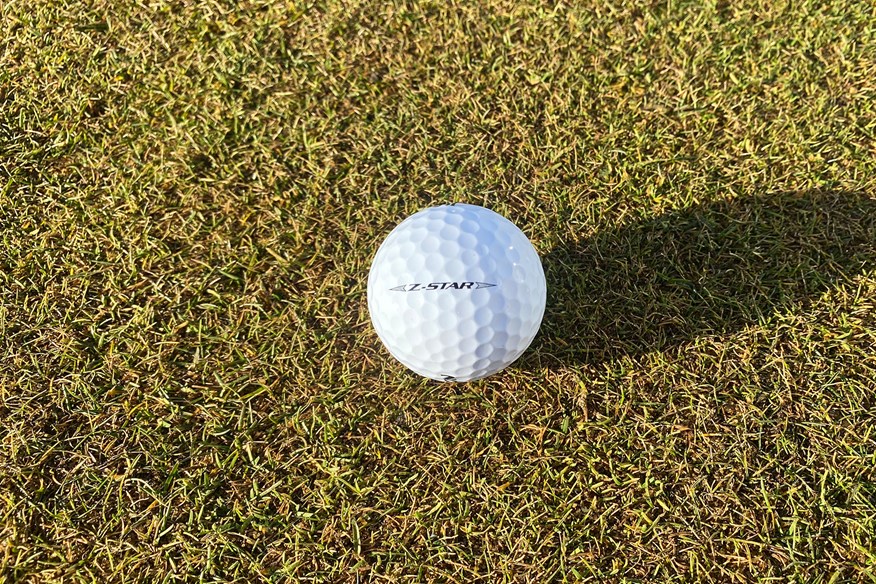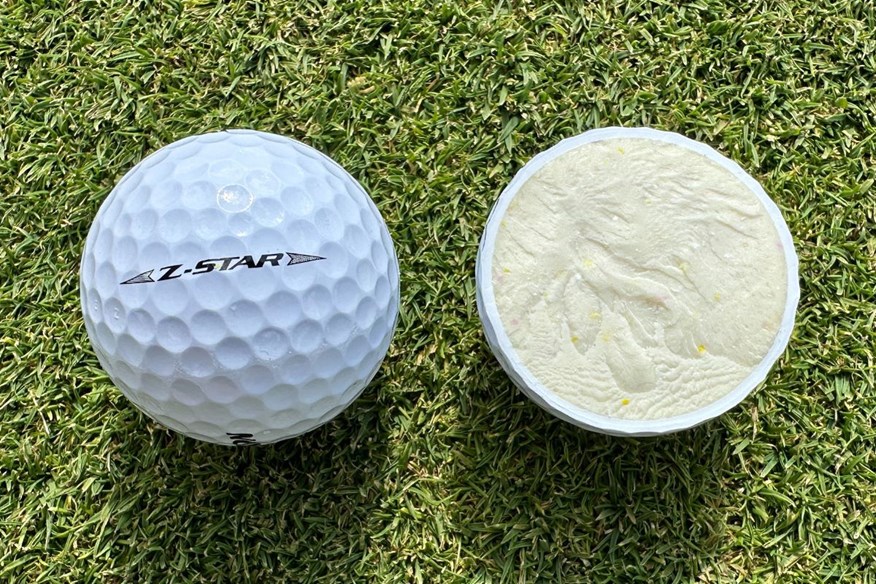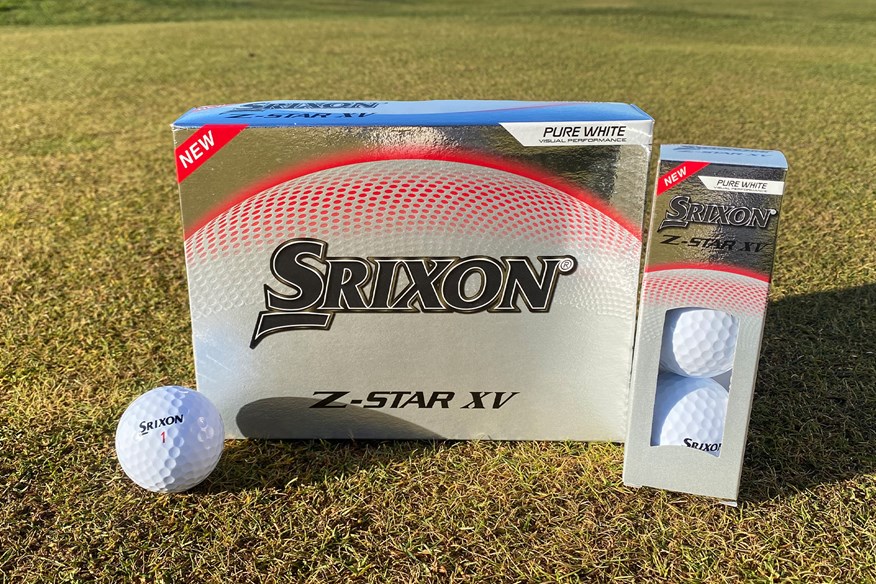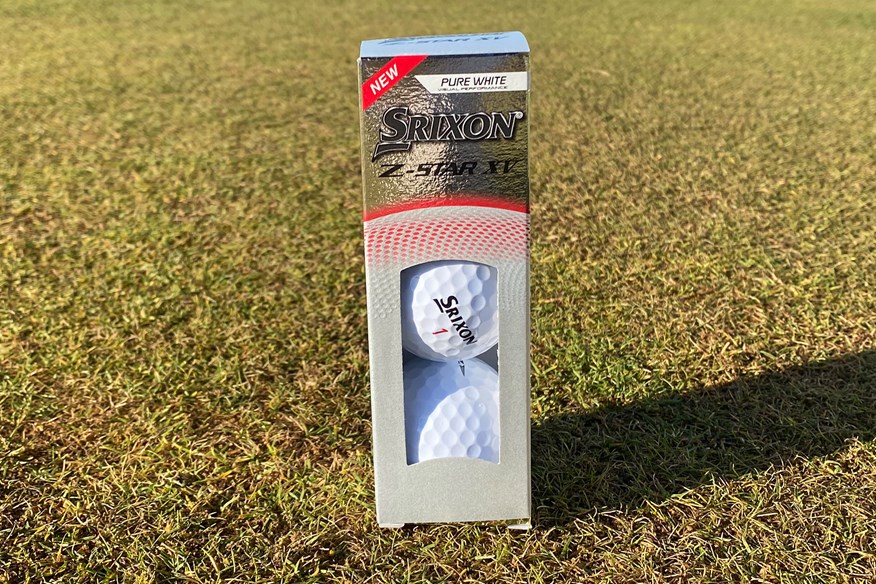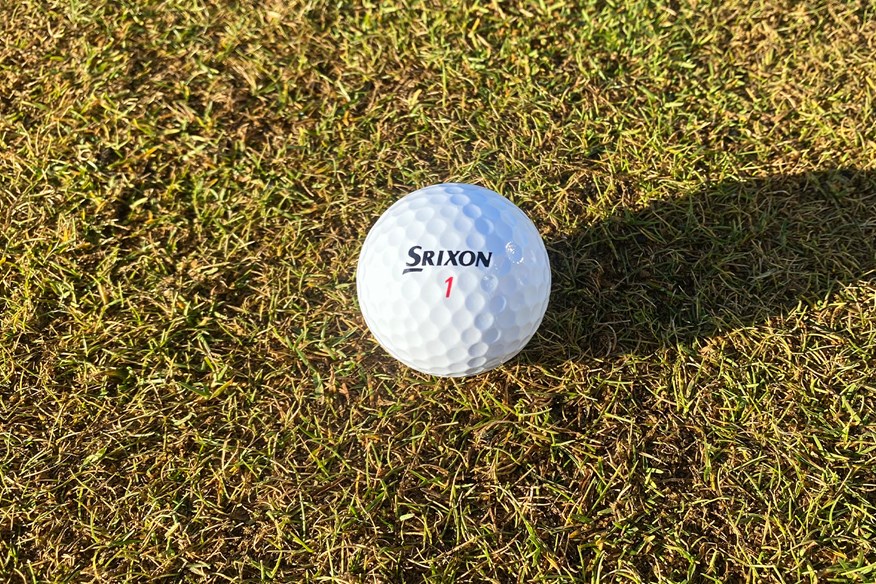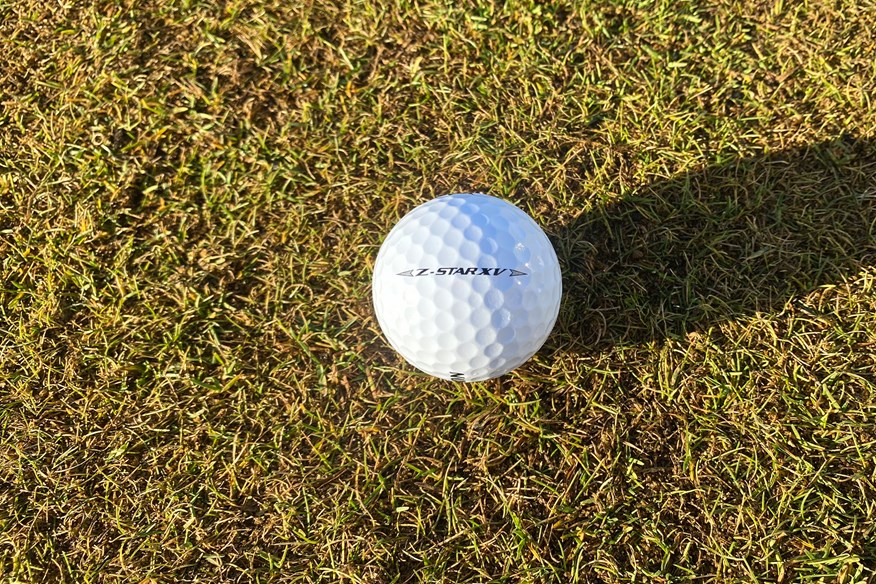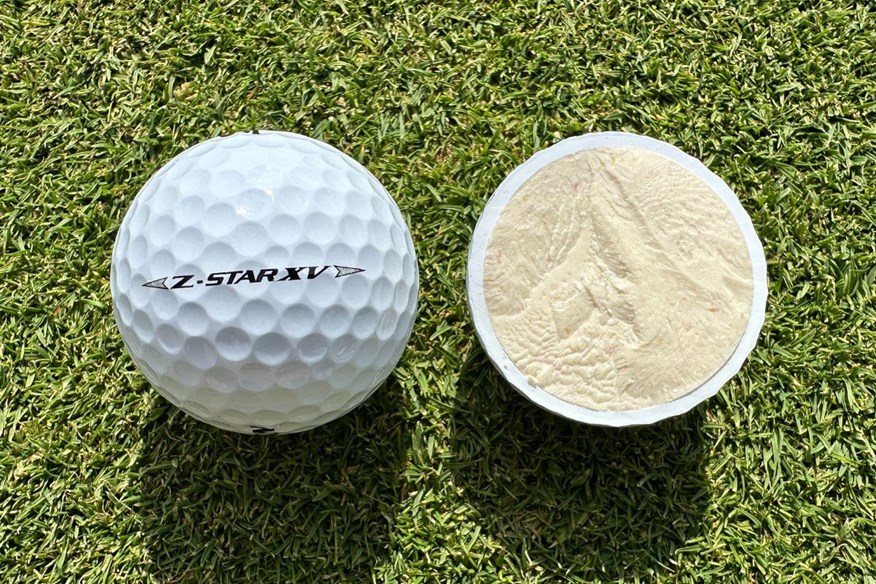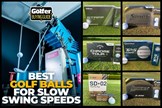Best golf balls for slow swing speeds 2025: Tested on an R&D robot and on-course
Last updated:
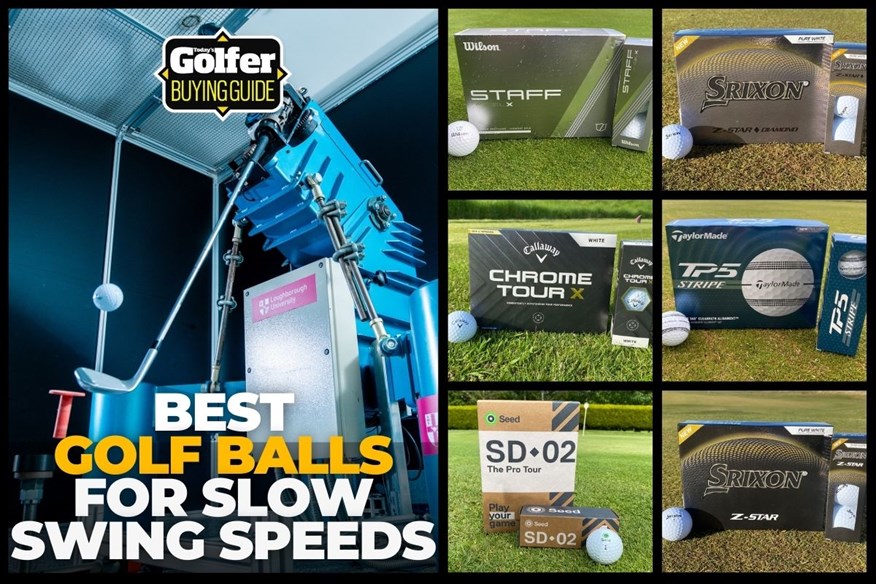
Click below to find out more about Today's Golfer's golf ball testing process.
Just so you know, we may receive a commission or other compensation from the links on this website – read why you should trust us.
We’ve tested the most popular and most-played golf balls on an R&D robot and on-course to help you determine which is the best golf ball for slow swing speeds
Jump to:
- At a glance
- Best golf balls for slow swing speeds
- Robot test data
- Buying guide
- FAQs
- What to read next
If you’re a golfer with a slow swing speed and you want to find the best golf ball for your game, then you’ve come to the right place. We’ve tested 62 of the most-played golf balls on an R&D robot and on-course, and compiled a list of the best models to choose from, ensuring there’s an option for golfers of all playing abilities.
Just because you have a slow swing speed doesn’t mean you can’t play with premium golf balls. Nor does it mean that you need to put a distance golf ball in play. However, if you are looking for a golf ball relevant to your playing ability, then feel free to take a look at the best golf balls for mid-handicappers or the best golf balls for beginners and high-handicappers.
A struggle for golfers with slow swing speeds can be generating spin; therefore, it might also be worth checking out the best high-spin golf balls. Like in all categories of golf balls, you can spend a pretty penny, or you can save some cash by opting for a cheap golf ball.
Best golf balls for slow swing speeds: At a glance
Among the best golf balls for slow swing speeds are models represented on Tour and some of the best value golf balls on the market. There’s a wide range of golf balls that are suitable for golfers with slow swing speeds, and the options in this article are a good place to start, but there are many more you could play.
If, after looking through the options below, you’re still unsure as to what you’re looking for, please take the time to read through the detailed buying guide and see if any questions you have can be answered in the FAQ section.
- 2025 golf ball robot test: 62 golf balls, 2,232 shots, 50,000 data points… find out what’s No.1 for you
- How we test golf equipment at Today’s Golfer
The main aspect to consider when looking for the best golf ball if you have a slow swing speed is… you’ve guessed it… swing speed! While this is arguably subjective depending on your standard/level of golf, if you have a swing speed north of 85mph, chances are you don’t need to be playing with a golf ball for slow swing speeds.
The other is ability. As I’ve already mentioned, there is a wide range of golf balls featured below, from five-piece golf balls to three-piece golf balls. Based on your ability, hopefully, you should find a suitable option to help you play great golf.
Best golf balls for slow swing speeds 2025
The most dominant Tour-level golf ball
Best overall golf ball for slow swing speeds
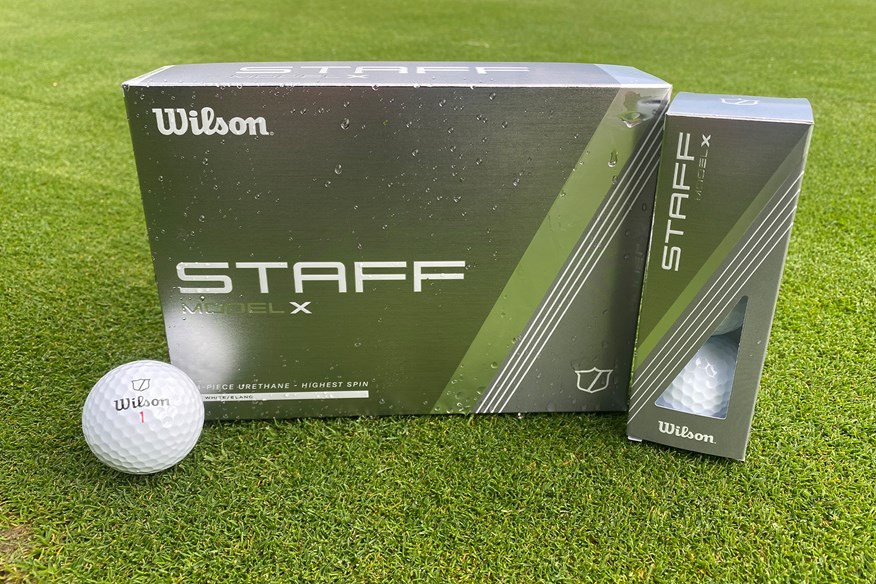

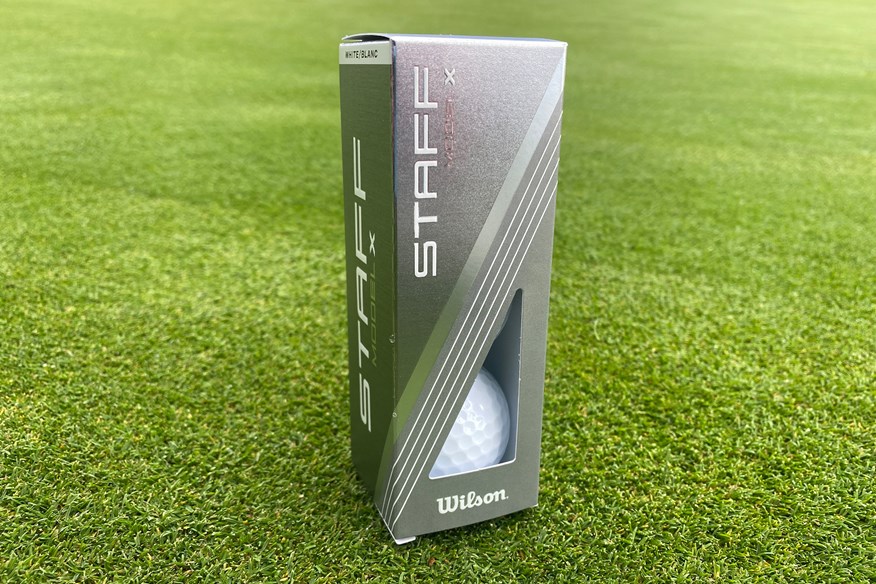
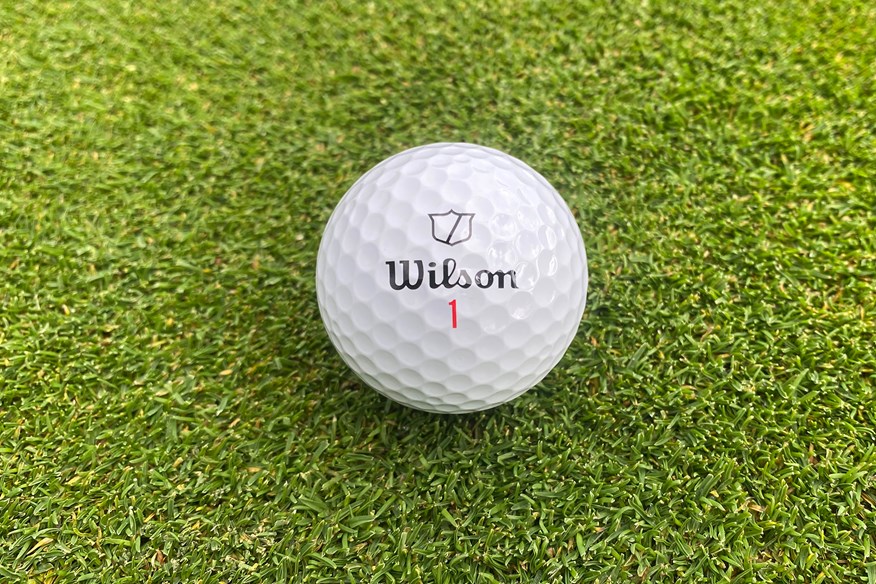
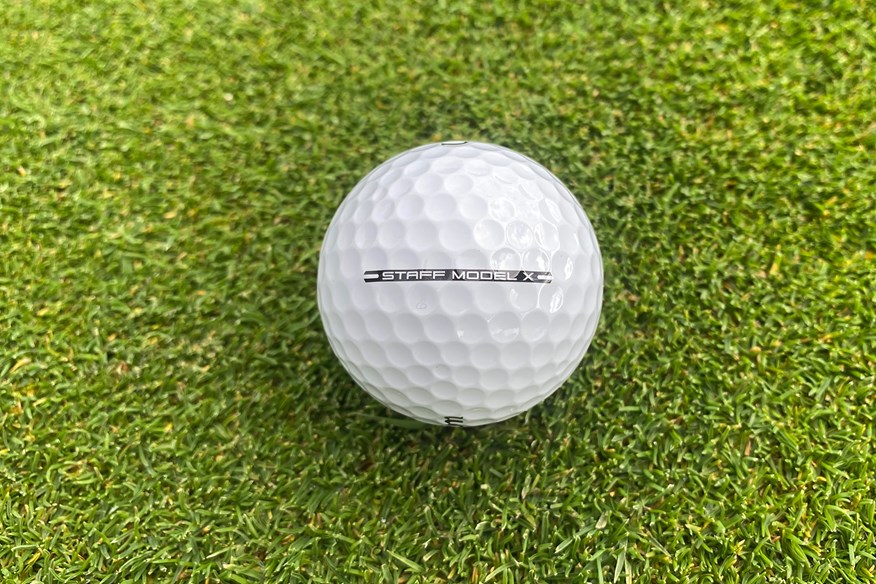
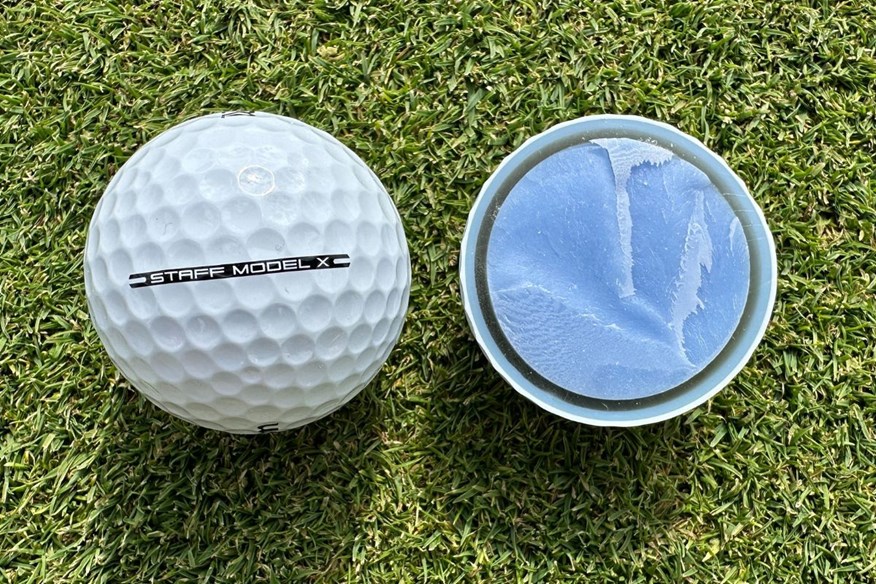
This is arguably the best golf ball in the game. The Wilson Staff Model X is the gold medal winner for tee to green performance at 93mph and 78mph, silver medal winner for tee to green performance at 114mph, silver medal winner for off-the-tee performance, and bronze medal winner for approach play and short game spin.
No other golf ball in our test has received as many awards as the Staff Model X. It's the only golf ball to have received an award in every category.
Staff Model X isn't the longest or fastest golf ball at any of the three driver swing speeds we tested, but it's consistently towards the top of the rankings. It's a higher-spinning golf ball compared to the Staff Model, and that is highlighted with its approach play and short game performance.
This golf ball lands with the steepest descent angle of all 62 tested (45.4°), which helps it easily hit and hold greens. Pair that with the fourth-highest backspin (4,782rpm) and you have a recipe for success.
With the 40-yard pitch shot, Staff Model X generated the third-highest spin (6,091) and again, a steep descent angle (35.5°), meaning this golf ball will stop very quickly when playing around the greens.
On-course verdict
Since being released at the start of 2024, the Staff Model X has been one of my favorite golf balls to play with over the past couple of years. I have a ton of confidence in this model whenever I put it in play. It has become a go-to golf ball for me when I'm not playing my best golf because I know I can trust it to perform well and true.
With its firm feel, it may not appeal to every golfer, but this makes the ball extremely responsive, providing brilliant feedback on all shots. The firm feel is noticeable, compared to softer golf balls, but after a couple of rounds, you practically forget it's a firm golf ball.
Off the tee, the Staff Model X offers slightly more spin than the Staff Model, but that doesn't hinder its overall carry distance. The higher-spinning nature of this model means greenside spin and control is very strong.
The Wilson Staff Model X is the full package. If you're shopping for a premium Tour-level golf ball, this is the No.1 option for golfers of all abilities to consider.
Read our full Wilson Staff Model X golf ball review.
Pros
- Extremely responsive thanks to the firm-feeling
- Performs highly for golfers of all abilities
- Amazing short-game spin and control
Cons
- Higher-spinning than the Staff Model off the tee
| Carry distance (yds) | Driver 114mph - 273.7 | Driver 93mph - 209.8 | Driver 78mph - 162.2 | 7-iron - 156.1 |
| Ball speed (mph) | Driver 114mph - 164.3 | Driver 93mph - 134.6 | Driver 78mph - 113.4 | 7-iron - 109.3 |
| Backspin (rpm) | Driver 114mph - 2,797 | Driver 93mph - 2,792 | Driver 78mph - 2,623 | 7-iron - 4,782 | Pitch - 6,091 |
| Launch angle (°) | Driver 114mph - 11.2 | Driver 93mph - 12.5 | Driver 78mph - 13.8 | 7-iron - 21 | Pitch - 30.4 |
| Descent angle (°) | Driver 114mph - 38.4 | Driver 93mph - 32.6 | Driver 78mph - 28.1 | 7-iron - 45.4 | Pitch - 35.5 |
| Peak height (yds) | Driver 114mph - 33.7 | Driver 93mph - 22.6 | Driver 78mph - 15.9 | 7-iron - 30 | Pitch - 6.7 |
| Compression (psi) | 114 |
- V-Cor advanced performance
- Firm compression core with velocity-boosting additive
- 3SIX2 seamless urethane cover
- 362 dimples
- 4-Piece construction
- Available in white and yellow
The most dominant 3-piece Tour-level golf ball
Best three-piece golf ball for slow swing speeds
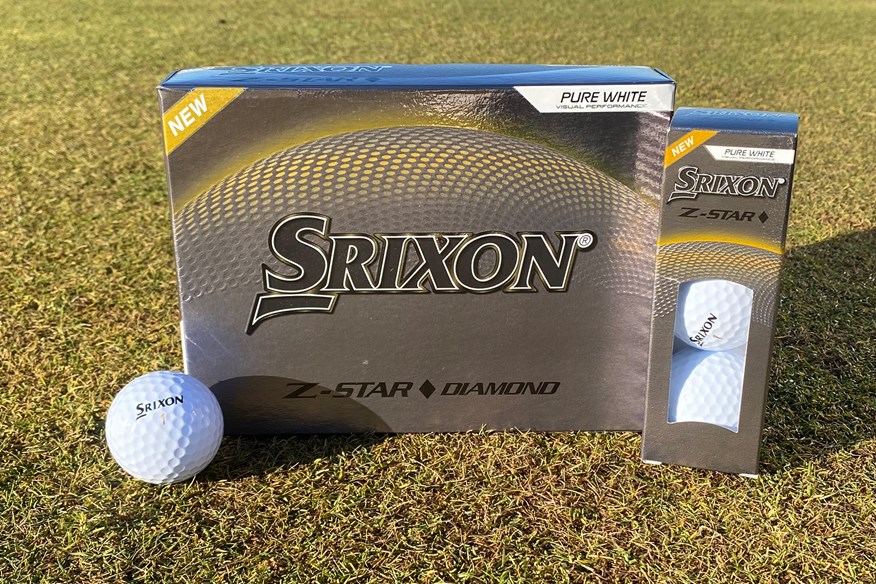

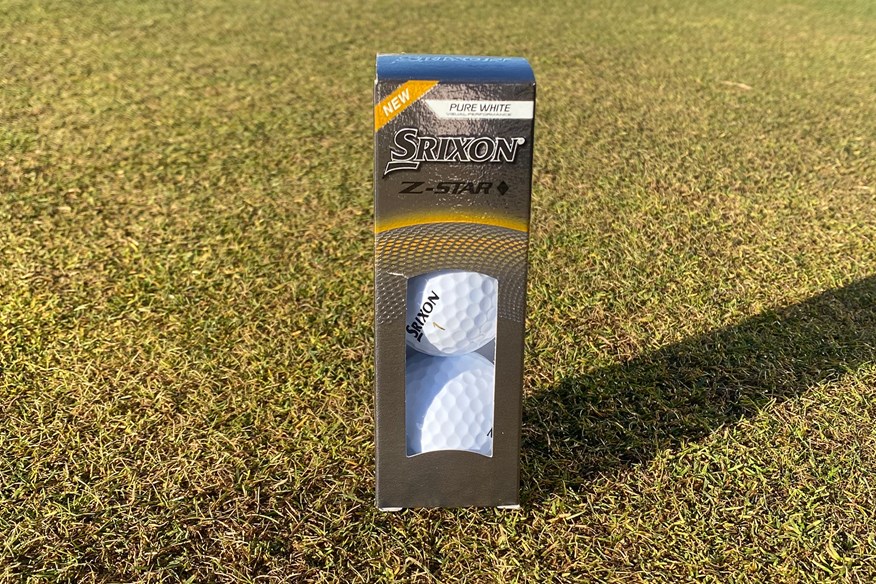
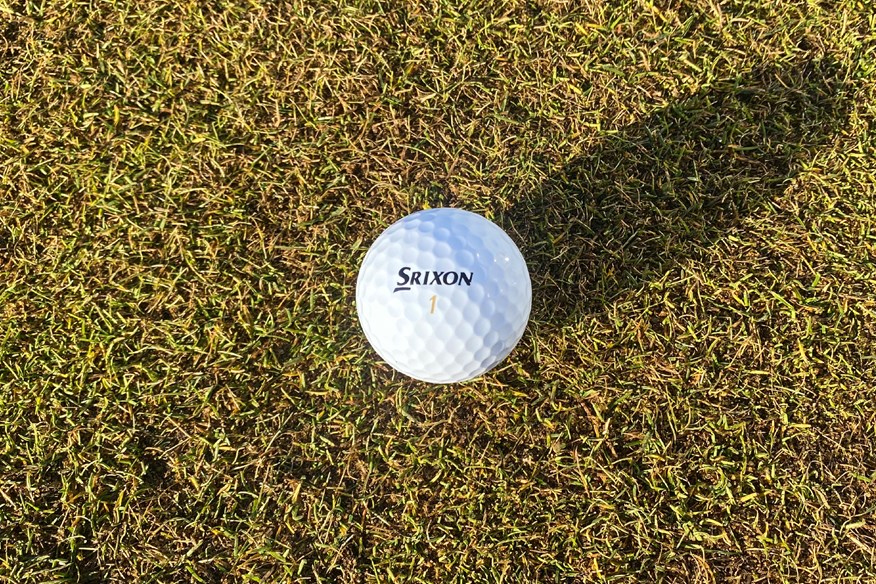
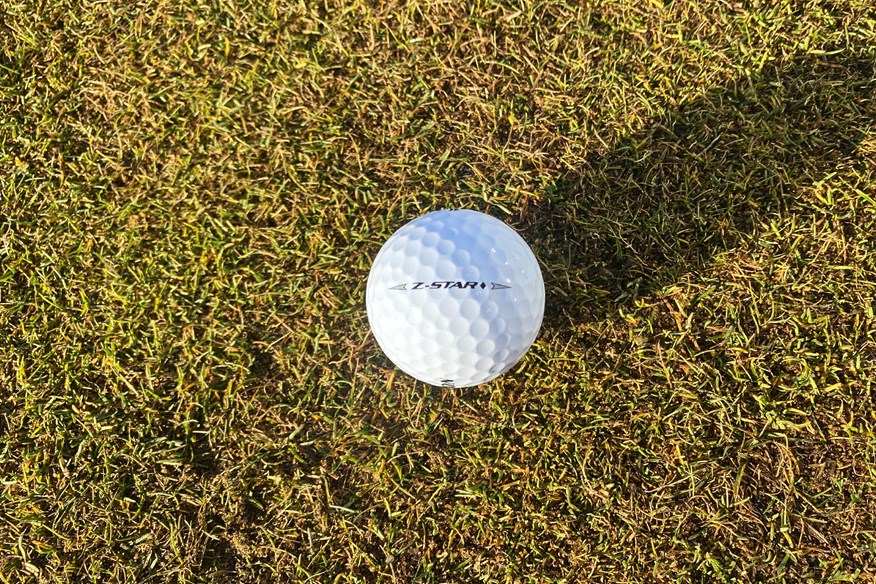
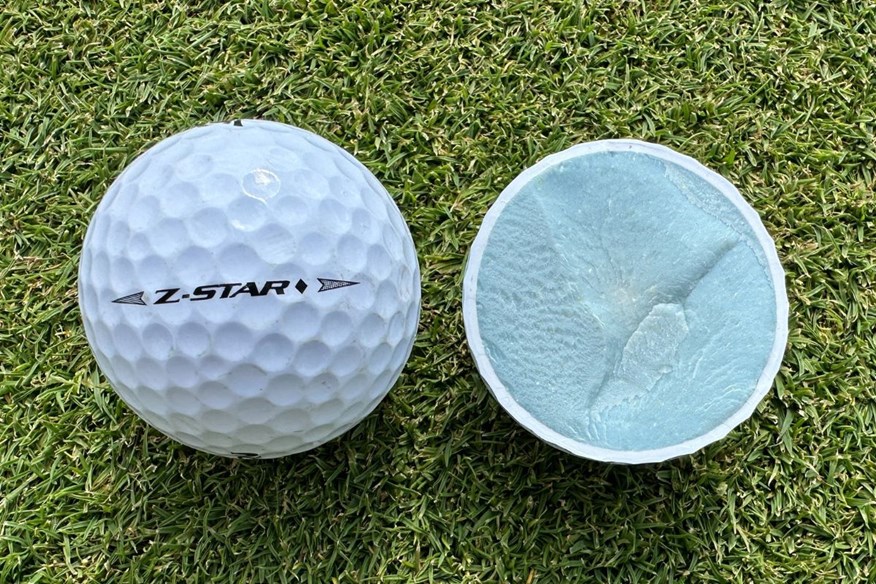
The Srixon Z-Star Diamond is one of the best high-spin golf balls. This golf ball was initially designed for Brooks Koepka, but it's become more popular among other Srixon staffers and amateur golfers. Based on our 2025 robot test results, it's clear to see why!
The Z-Star Diamond won an award in every category, barring one (off-the-tee performance), but where it did rank, it took the top spot. Let's have a quick run through the Z-Star Diamond's awards: gold medal for tee to green performance at 114mph, 93mph, and 78mph, gold medal for approach play, and gold medal for short-game performance.
Around the greens, the Z-Star Diamond is the best three-piece Tour-level golf ball you can play, and the second-best golf ball of all 62 tested, generating 6,137rpm backspin at the 40-yard pitch shot.
However, it's unlikely you'll miss the green in the first place! The Z-Star Diamond is the best golf ball for firing at pins. This golf ball ranks second for descent angle (45.3°), fourth for carry distance consistency, and third for backspin (5,149rpm - one of only three golf balls with over 5,000rpm). This is a recipe for success when you're attacking pins.
The Z-Star Diamond is a consistent golf ball off the tee at all three driver swing speeds. So, whether you swing like Koepka or not, this golf ball will deliver strong numbers for your swing speed. The Z-Star Diamond is above the test average for ball speed and carry distance at all three driver swing speeds.
This golf ball cleaned up in the three-piece Tour-level category! The Z-Star Diamond has to be on your mind if you're looking for a new golf ball.
On-course verdict
The Srixon Z-Star Diamond delivers the optimal performance out of the three golf balls in the 2025 Z-Star range.
The Z-Star Diamond is brilliant if you’re looking for one of the best high-spin golf balls because it’s very easy to generate spin with this model. That being said, it’s definitely lower-spinning off the tee than the previous generation.
I’ve tested a heap of outstanding Tour-level golf balls over the past couple of years, but I don’t think any have impressed me as much as the Z-Star Diamond on approach shots.
If you think a golf ball that travels far and spins high sounds right for your game, then you have to try the Z-Star Diamond, regardless of your ability.
I absolutely love how this golf ball feels off every club face in my bag. I wouldn’t necessarily say it’s particularly firmer than the Z-Star or Z-Star XV, but I think the feedback is much stronger. Thanks to the solid feedback, the response is very satisfying on well-struck shots, but not so much when the contact isn’t as good. However, I think that’s what makes a good golf ball.
Of all the golf balls I’ve played with over the past couple of seasons, this is without a doubt the best-performing golf ball from tee to green.
The Z-Star Diamond performs optimally in every area, which makes it extremely difficult to criticize. It feels great, feedback is amazing, and performance is extraordinary.
I don’t know what more a golf ball can offer!
Read our full Srixon Z-Star Diamond golf ball review.
Pros
- Amazing control from tee to green
- High spinning in the iron and short game
- Fantastic feedback and response
Cons
- High-spinning nature does slightly hinder distance
| Carry distance (yds) | Driver 114mph - 270.7 | Driver 93mph - 207.8 | Driver 78mph - 161 | 7-iron - 153.1 |
| Ball speed (mph) | Driver 114mph - 163.6 | Driver 93mph - 133.8 | Driver 78mph - 113.1 | 7-iron - 108.7 |
| Backspin (rpm) | Driver 114mph - 2,988 | Driver 93mph - 2,838 | Driver 78mph - 2,719 | 7-iron - 5,149 | Pitch - 6,137 |
| Launch angle (°) | Driver 114mph - 11.2 | Driver 93mph - 12.5 | Driver 78mph - 13.6 | 7-iron - 20.5 | Pitch - 30 |
| Descent angle (°) | Driver 114mph - 39.4 | Driver 93mph - 32.6 | Driver 78mph - 28.1 | 7-iron - 45.3 | Pitch - 35.1 |
| Peak height (yds) | Driver 114mph - 34.5 | Driver 93mph - 22.4 | Driver 78mph - 15.7 | 7-iron - 29.3 | Pitch - 6.5 |
| Compression (psi) | 106 |
- Speed dimple pattern
- Thin premium Biomass cover
- Spin skin+ coating
- Fastlayer DG core 2.0
- 338 dimples
- 3-Piece construction
- Available in white and yellow
Gold medal for tee to green performance at 114mph
The Wilson Staff Model is a very impressive golf ball that unfortunately sits in the shadow of the Staff Model X. That might sound harsh, considering this is the best golf ball for tee to green performance at 114mph in this category.
At the 114mph driver swing speed, this is the third-longest golf ball, and one of only three to exceed 274 yards in the entire test. At a moderate and slower swing speed, the Staff Model is a solid performer, but not as strong as the Staff Model X - third at 93mph and second at 78mph.
There is one area where the Staff Model outshines the Staff Model X, and that's with approach play. Staff Model scooped up the silver medal for approach play with the Staff Model X, one place behind in the bronze medal position.
Approaching and playing around the greens, the Staff Model doesn't generate as much spin as the Staff Model X, but its distance is more consistent. Despite being a lower-spinning golf ball, you might be able to trust the Staff Model more to carry a repeatable distance - even if it is shorter.
At quick swing speeds, this is definitely a good option if you want a golf ball that can do everything, but with the Staff Model X just behind at 114mph for tee to green performance, and given how it's better-performing almost everywhere else, it's hard not to recommend Staff Model X instead.
That being said, the best way to differentiate is if you want a lower-spinning, softer golf ball, go for the Staff Model.
On-course verdict
The Staff Model is a very strong performer from tee to green. If you don't want a high-spinning, firm-feeling golf ball, this is your best option. This model isn't as impressive as the Staff Model X, but it's pretty darn close.
From tee to green, the Staff Model is super consistent, and it ticks a lot of boxes for the majority of golfers. Regardless of your ability or swing speed, the Staff Model will work for you if you want a golf ball that's easy to control when playing into and around greens and competitive for distance off the tee.
There's a ton to like about the Staff Model, and its softer feel compared to the Staff Model X is sure to please a lot of golfers.
Read our full Wilson Staff Model golf ball review.
Pros
- Incredible distance off the tee
- Amazing short game performance
- Softer feel will be appreciated by many golfers
Cons
- Overall performance is just below that of the Staff Model X
| Carry distance (yds) | Driver 114mph - 274.3 | Driver 93mph - 209.2 | Driver 78mph - 161.7 | 7-iron - 156.3 |
| Ball speed (mph) | Driver 114mph - 164.7 | Driver 93mph - 134 | Driver 78mph - 113.3 | 7-iron - 109 |
| Backspin (rpm) | Driver 114mph - 2,829 | Driver 93mph - 2,703 | Driver 78mph - 2,595 | 7-iron - 4,653 | Pitch - 5,993 |
| Launch angle (°) | Driver 114mph - 11.2 | Driver 93mph - 12.8 | Driver 78mph - 13.9 | 7-iron - 21.1 | Pitch - 30.6 |
| Descent angle (°) | Driver 114mph - 38.6 | Driver 93mph - 32.4 | Driver 78mph - 28 | 7-iron - 45.2 | Pitch - 35.8 |
| Peak height (yds) | Driver 114mph - 34.1 | Driver 93mph - 22.5 | Driver 78mph - 15.8 | 7-iron - 29.8 | Pitch - 6.8 |
| Compression (psi) | 112 |
- V-Cor advanced performance
- Medium compression core with velocity-boosting additive
- 3SIX2 seamless urethane cover
- 362 dimples
- 4-Piece construction
- Available in white and yellow
Gold medal for approach play and short game performance
Best high-spin golf ball for slow swing speeds
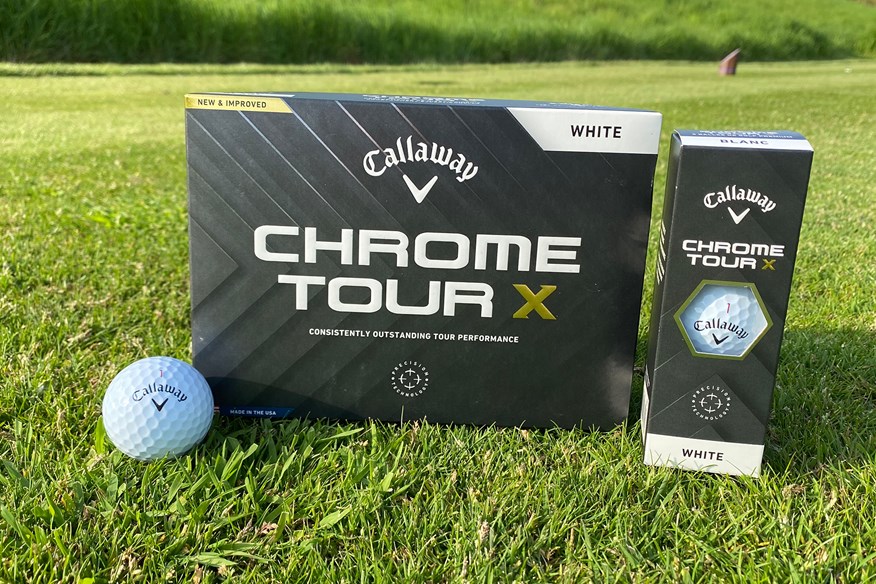

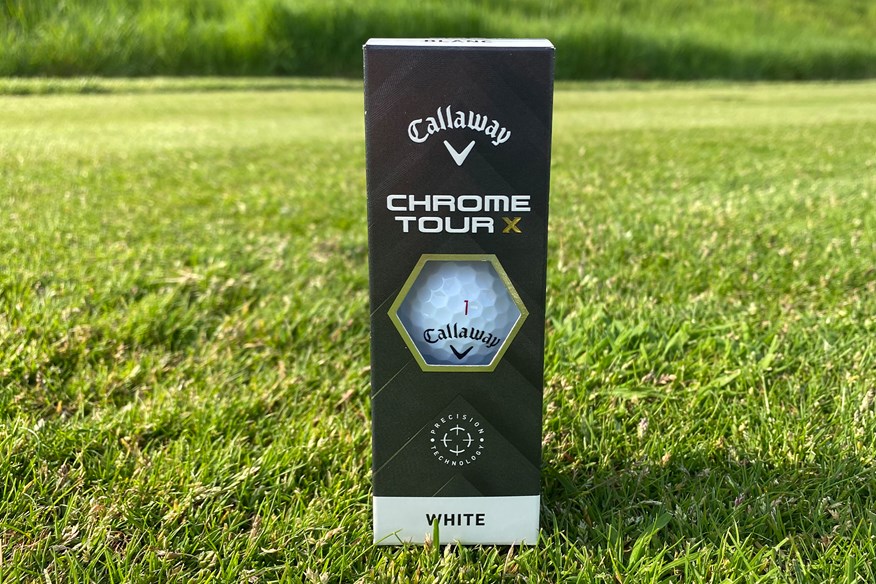
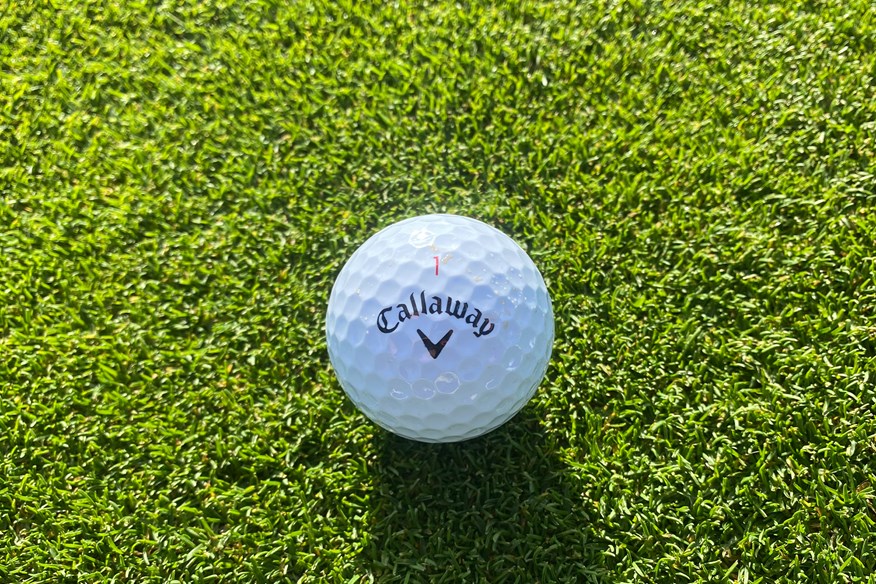
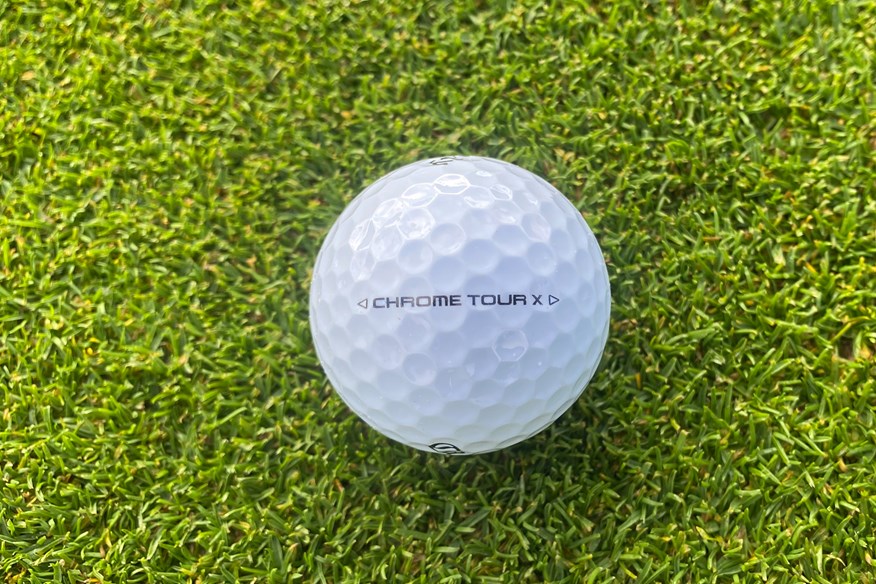
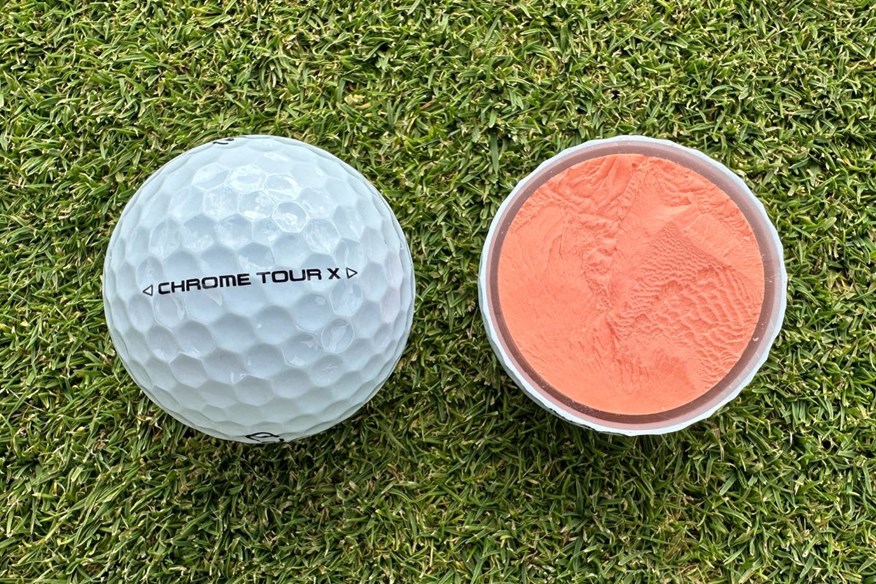
Every golfer wants a golf ball that stops on a dime when playing around the greens because it makes getting up and down so much easier. The golf ball that's going to help you out most around the greens is the Callaway Chrome Tour X.
Of all 62 golf balls tested, the Chrome Tour X is the highest-spinning golf ball around the green. This golf ball was able to generate 6,343rpm, the nearest in this category is the TaylorMade TP5 (6,100), and the second-highest spinning in the test is the Srixon Z-Star Diamond (6,137).
The high-spin nature of the Chrome Tour X does continue through the bag, which isn't an issue when approaching greens. As well as being awarded the gold medal for short game performance, the Chrome Tour X also finished first for approach play.
With the 7-iron shot, this is the highest-spinning golf ball in the test with 5,242rpm. Over 400 revs higher than the second-highest-spinning golf ball in this category (TaylorMade TP5 - 4,823).
The only issue with such a high-spinning golf ball is it hinders distance, so if you prioritise distance over spin, the Chrome Tour is a better option. However, if you want more control and spin, the Chrome Tour X has to be at the top of your list.
Off the tee, you aren't losing much distance with the Chrome Tour X, and at 93mph, this is the second-best four-piece and five-piece golf ball from tee to green.
On-course verdict
Callaway have absolutely smashed it out of the park this year with their four-piece Chrome Tour, Chrome Tour X, and Chrome Tour Triple Diamond golf balls.
Other than having major shelf appeal, the Chrome Tour X is premium for multiple reasons. One of which is that it's widely used by Tour players, and another is that it's a really solid performer from tee to green.
Off the tee, the Chrome Tour X is the highest-spinning Chrome Tour model, which won’t be to everyone’s liking, but for those who struggle to generate height and potentially lose the ball left, then the Chrome Tour X is well worth considering.
The Chrome Tour X spins on command. Playing into and around greens is extremely fun and simple because you can throw this ball at the pin and it will stop.
If you want a golf ball that spins high and is easy to control, there isn't a better option out there.
Read our full Callaway Chrome Tour X golf ball review.
Pros
- Extremely high spin and control when approaching the greens
- Produces brilliant ball speeds and distance
- Played by some of the best players in the world across numerous Tours
Cons
- Callaway's highest-spinning premium golf ball might not be what every golfer needs
| Carry distance (yds) | Driver 114mph - 269.7 | Driver 93mph - 208.9 | Driver 78mph - 160.8 | 7-iron - 156.1 |
| Ball speed (mph) | Driver 114mph - 163.6 | Driver 93mph - 134.3 | Driver 78mph - 113 | 7-iron - 108.7 |
| Backspin (rpm) | Driver 114mph - 2,997 | Driver 93mph - 3,048 | Driver 78mph - 2,921 | 7-iron - 5,242 | Pitch - 6,343 |
| Launch angle (°) | Driver 114mph - 10.8 | Driver 93mph - 12.5 | Driver 78mph - 13.5 | 7-iron - 20.3 | Pitch - 29.5 |
| Descent angle (°) | Driver 114mph - 38.7 | Driver 93mph - 34 | Driver 78mph - 28.8 | 7-iron - 45.3 | Pitch - 34.4 |
| Peak height (yds) | Driver 114mph - 33.3 | Driver 93mph - 23.4 | Driver 78mph - 16 | 7-iron - 29.1 | Pitch - 6.3 |
| Compression (psi) | 111 |
- Hyper fast soft core
- Seamless Tour aero
- High-performance Tour urethane soft cover
- 332 dimples
- 4-Piece construction
- Available in white and yellow
- Alternative models include Triple Track, 360° Triple Track, TruTrack, and Limited Edition patterns
Silver medal for short game performance
Best five-piece golf ball for slow swing speeds
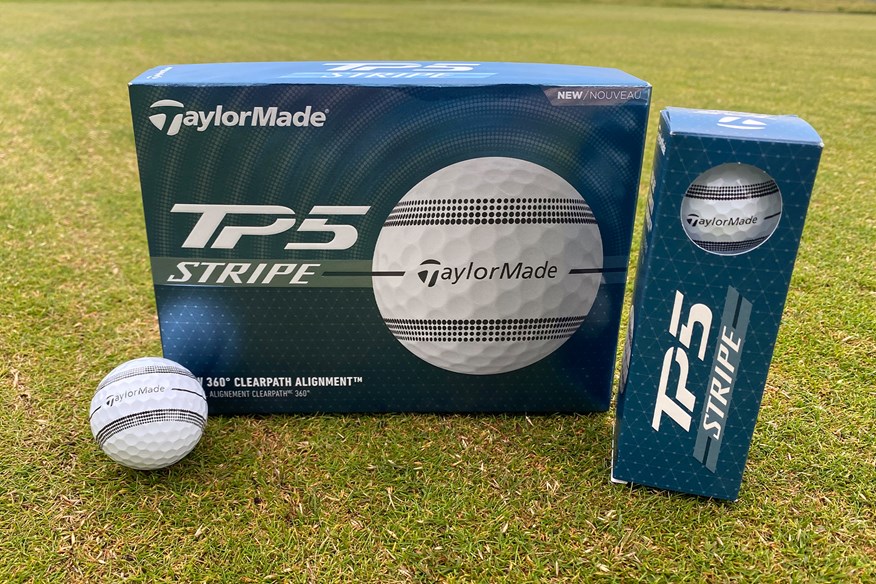

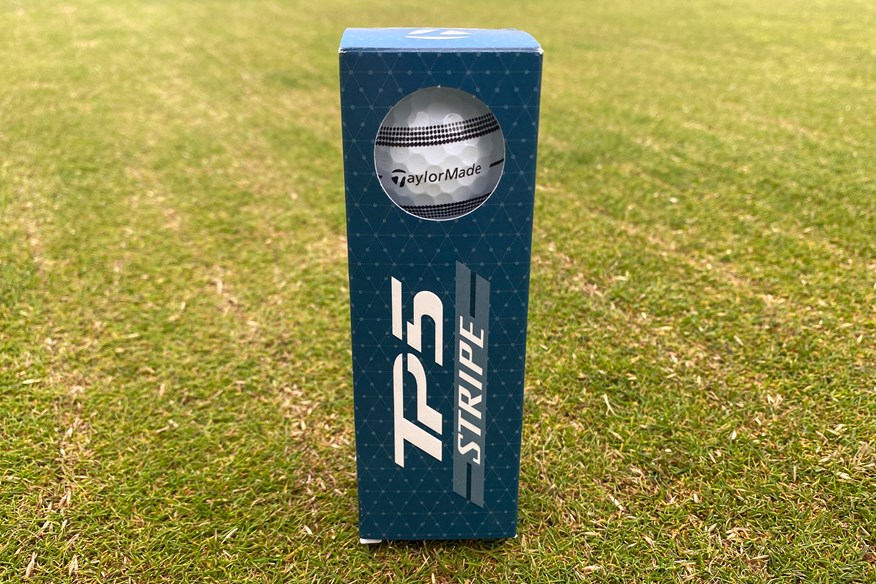
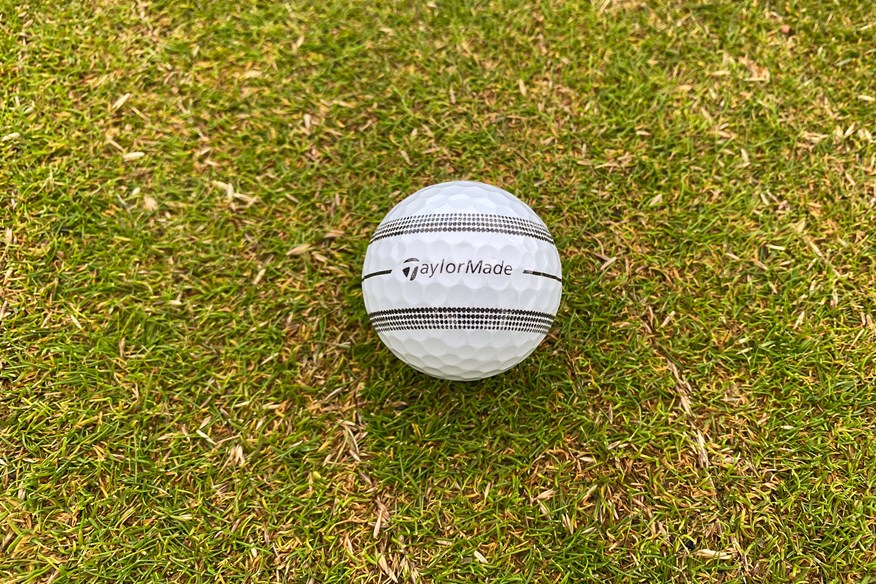
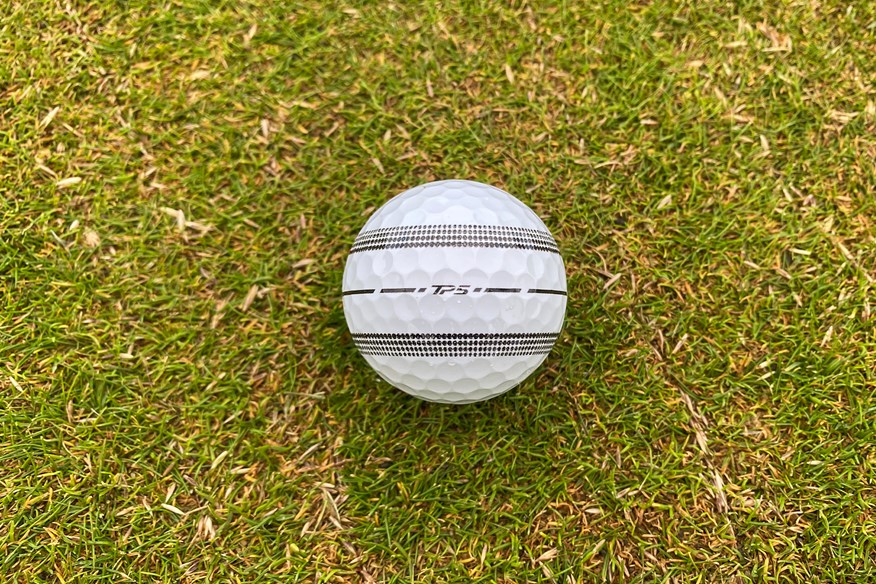
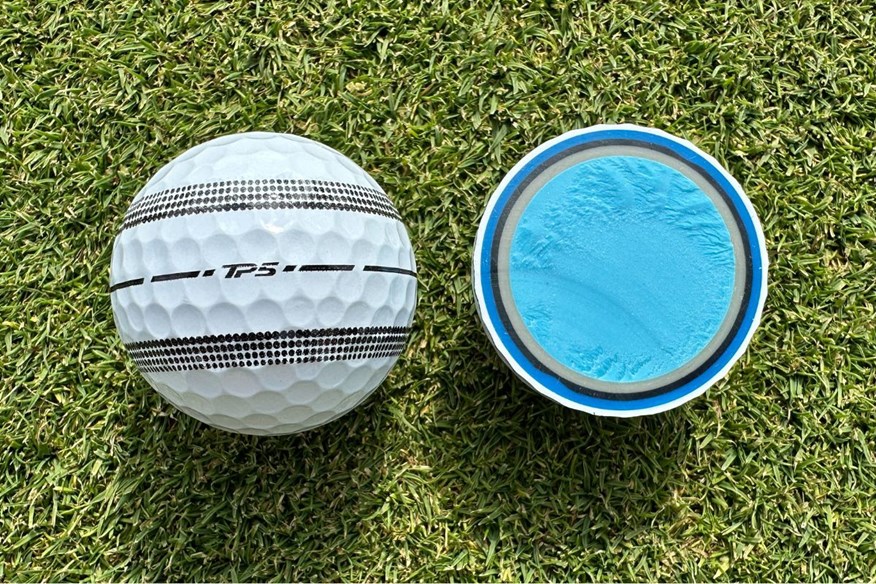
The TaylorMade TP5 is known for being TaylorMade's higher-spinning Tour-level golf ball. It gained popularity on Tour over the last year, having been put in play by Rory McIlroy and one of the best iron players in the world, Collin Morikawa.
A big reason why Tour pros and amateurs elect to play TP5 is because of how soft it is and how well it behaves around the greens. TP5 is the third-highest-spinning golf ball in the entire test (6,100rpm) from the 40-yard pitch shot, and that's good enough for the silver medal in the four- and five-piece category.
Also, TP5 emerged from our robot test as being very impressive for approach play, producing good distance (156.3 yards), the third steepest descent angle (45.3°), the second-highest backspin (4,823), and fastest ball speeds (109mph). However, none of that was good enough to earn the TP5 an award because its carry distance consistency wasn't strong enough.
At slower swing speeds, TP5 is the fourth-best-performing golf ball off the tee. At quicker and moderate swing speeds, the performance isn't as consistent.
If you're looking for a golf ball to help you out around the greens, the TP5 has to be on your list. There's a good reason why so many Tour stars and amateur golfers love TP5, and you might end up being the same once you give it a go.
On-course verdict
I might not be on the same level as some of the TaylorMade Tour players who elect to use TP5 over TP5x, but I think I'm with them on this one.
I love the firmer feel of the TP5x, but I think it's hard to look beyond the TP5s strong greenside performance.
With TP5, you're guaranteed a golf ball that's going to behave if you miss a green from the fairway (or rough). This can be vital in helping you get up and down and save par.
My answer on TP5 vs. TP5x has changed over the years, but currently I'm in the TP5 camp.
Read our full TaylorMade TP5 golf ball review.
Pros
- Incredible short game spin and control
- Very soft feel
- Strong tee to green performance at slow swing speeds
Cons
- Not as responsive as the TP5x
| Carry distance (yds) | Driver 114mph - 268 | Driver 93mph - 208.8 | Driver 78mph - 162.6 | 7-iron - 156.3 |
| Ball speed (mph) | Driver 114mph - 162.3 | Driver 93mph - 134 | Driver 78mph - 113.9 | 7-iron - 109.6 |
| Backspin (rpm) | Driver 114mph - 2,825 | Driver 93mph - 2,911 | Driver 78mph - 2,676 | 7-iron - 4,823 | Pitch - 6,100 |
| Launch angle (°) | Driver 114mph - 10.8 | Driver 93mph - 12.6 | Driver 78mph - 13.6 | 7-iron - 20.7 | Pitch - 30 |
| Descent angle (°) | Driver 114mph - 37.2 | Driver 93mph - 33.4 | Driver 78mph - 28.1 | 7-iron - 45.3 | Pitch - 35.4 |
| Peak height (yds) | Driver 114mph - 31.6 | Driver 93mph - 23.1 | Driver 78mph - 15.8 | 7-iron - 29.8 | Pitch - 6.8 |
| Compression (psi) | 104 |
- Speed-wrapped core
- Progressive 5-layer construction
- Seamless Tour flight dimple pattern
- 322 dimples
- 5-Piece construction
- Available in white only
- Alternative models include Pix, Stripe, and Limited Edition patterns
Bronze medal for tee to green performance at 78mph
The Seed SD-02 is the best-performing DTC golf ball off the tee. The SD-02 is designed to compete with the likes of the Titleist Pro V1x and TaylorMade TP5x, and that's exactly where it pitches based on the results from our test.
You can even argue it's a better-performing golf ball. At 78mph, the SD-02 is the third-best golf ball from tee to green, and at 93mph and 114mph, it misses out by one, finishing just behind the Pro V1x at 114mph and with the same score as the Staff Model at 93mph.
The SD-02 is such a solid golf ball from tee to green. At all three driver speeds, and with the approach shot, there isn't one area where it doesn't perform well.
Seed says this is a low-launching and low-flying golf ball, but if anything, it is above the average for launch angle and peak height in this category of golf balls.
This is supposedly Seed's highest-spinning golf ball around the green, but it's not as high-spinning as the SD-01. The SD-02 is also not as high-spinning in approach play as other Seed golf balls, and it's the lowest-spinning golf ball within this category (4,397rpm).
However, thanks to the steep descent angle, you can expect the SD-02 to hit and hold greens and come to a quick stop in the short game.
The Seed SD-02 is a solid golf ball from tee to green at varying swing speeds. It's not as high-spinning as other golf balls in this category or other Seed golf balls, but considering this is said to challenge the Pro V1x and TP5x, it does do that, at a cheaper price.
On-course verdict
I genuinely believe that any golfer could play with this golf ball and make it work for them. The SD-02 does it all. It’s long off the tee, it spins on approach shots, and it rolls perfectly on the putting surface.
The ball flight is consistent above all else, so I feel like I can trust that this golf ball will behave off the tee and help me find the fairway. The other plus off the tee is that it’s long, which no golfer can complain about.
The SD-02 feels slightly softer than other X-model golf balls, which will please most golfers because typically X-models tend to be firmer-feeling. I’m a fan of a firmer golf ball, and the SD-02 still feels really good to me.
Throughout the bag, the response you get from the SD-02 is very strong. If you hit the ball well, you’ll know, and if you hit the ball badly (sadly), you’ll know.
Read our full Seed SD-02 golf ball review.
Pros
- Amazing versatile golf ball that works for a wide range of golfers
- Good distance off the tee
- Incredible value for money
Cons
- A lower ball flight compared to other X-model golf balls
| Carry distance (yds) | Driver 114mph - 272.8 | Driver 93mph - 209.7 | Driver 78mph - 162.4 | 7-iron - 158.7 |
| Ball speed (mph) | Driver 114mph - 163.8 | Driver 93mph - 134.2 | Driver 78mph - 113.4 | 7-iron - 109.5 |
| Backspin (rpm) | Driver 114mph - 2,688 | Driver 93mph - 2,718 | Driver 78mph - 2,484 | 7-iron - 4,397 | Pitch - 5,845 |
| Launch angle (°) | Driver 114mph - 11 | Driver 93mph - 12.8 | Driver 78mph - 14 | 7-iron - 21.3 | Pitch - 30.9 |
| Descent angle (°) | Driver 114mph - 37 | Driver 93mph - 32.5 | Driver 78mph - 27.8 | 7-iron - 45 | Pitch - 36.4 |
| Peak height (yds) | Driver 114mph - 32.1 | Driver 93mph - 22.7 | Driver 78mph - 15.9 | 7-iron - 30 | Pitch - 7 |
| Compression (psi) | 104 |
- High energy rubber core
- Ultra thin DuPont Surlyn mantle
- DuPont HPF inner cover
- Soft cast urethane cover
- 336 dimples
- 4-Piece construction
- Available in white only
Silver medal for tee to green performance at 78mph and approach play performance
Srixon's Z-Star line-up has blown the three-piece Tour-level competition away. Granted, much of that is thanks to the Z-Star Diamond, but the Srixon Z-Star also contributed with a silver medal for tee to green performance at 78mph and approach play performance.
The Z-Star is right there with the Z-Star Diamond for approach play performance, but it sadly just misses out on top spot and has to settle for second-best out of all 62 golf balls tested. The Z-Star ranks fourth for descent angle (45.3°), fifth for carry distance consistency, and fifth for backspin (4,937rpm).
Being a lower-spinning golf ball than the Z-Star Diamond, it's hardly surprising to see the Z-Star rank lower in short-game performance. The Z-Star is the sixth-highest spinning three-piece Tour-level golf ball at the 40-yard pitch shot - firmly above the test average with 5,926rpm.
With a silver medal for tee to green performance at 78mph, the Z-Star performs best at slower swing speeds, ranking fifth overall. At more moderate and quicker swing speeds, the Z-Star isn't as strong off the tee, and that's perhaps why it's not as popular on Tour as Z-Star Diamond or Z-Star XV.
That being said, Z-Star is a golf ball for slower swing speed players to consider, especially if you want a golf ball you can trust when playing from the fairway.
On-course verdict
The Z-Star is my least-favored golf ball in Srixon's Z-Star range, but that's not to say it will be for everyone. For my game, it doesn't perform as well from tee to green as the Diamond or XV.
This is noticeably softer than the Diamond and XV, which I think makes it less responsive, and it dampens the feedback.
On the whole, all three Z-Star golf balls are very closely matched, but on the course, I can definitely tell this golf ball isn't right for me off the tee because it doesn't spin enough. For some golfers, that will be a plus, but for my game, I require a higher-spinning model.
The Z-Star has the lowest compression rating of the three models in Srixon's Z-Star range, and for that reason, it works best for golfers with slower swing speeds because it's easier to eke out its performance. If you swing the club too quickly, you go beyond the threshold of optimal performance.
Pros
- Amazing tee to green performance
- Premium option for golfers with slower swing speeds
- Very soft feel
Cons
- Doesn't perform as well at quicker swing speeds
| Carry distance (yds) | Driver 114mph - 269.4 | Driver 93mph - 206.6 | Driver 78mph - 161.1 | 7-iron - 154.1 |
| Ball speed (mph) | Driver 114mph - 162.7 | Driver 93mph - 133.1 | Driver 78mph - 113.1 | 7-iron - 108.7 |
| Backspin (rpm) | Driver 114mph - 2,900 | Driver 93mph - 2,859 | Driver 78mph - 2,693 | 7-iron - 4,937 | Pitch - 5,926 |
| Launch angle (°) | Driver 114mph - 11.1 | Driver 93mph - 12.6 | Driver 78mph - 13.7 | 7-iron - 20.8 | Pitch - 30.6 |
| Descent angle (°) | Driver 114mph - 38.5 | Driver 93mph - 32.8 | Driver 78mph - 28.1 | 7-iron - 45.3 | Pitch - 35.9 |
| Peak height (yds) | Driver 114mph - 33.3 | Driver 93mph - 22.4 | Driver 78mph - 15.8 | 7-iron - 29.5 | Pitch - 6.9 |
| Compression (psi) | 92 |
- Speed dimple pattern
- Thin premium Biomass cover
- Spin skin+ coating
- Fastlayer DG core 2.0
- 338 dimples
- 3-Piece construction
- Available in white and yellow
- An alternative model is the Divide
Silver medal for tee to green performance at 114mph
The Srixon Z-Star XV is the distance-oriented model in Srixon's Z-Star line-up, and it's the ball of choice for 2019 Champion Golfer Shane Lowry, 2021 Masters Champion Hideki Matsuyama, and Austria's only PGA Tour winner, Sepp Straka.
Despite being the supposed longest golf ball in the Z-Star range, the Z-Star XV isn't as long as the Z-Star Diamond at any of the three driver swing speeds tested. That being said, at 114mph, it's very close.
Add in the impressive approach play performance, and there's no surprise this golf ball won the silver medal for tee to green performance at the quick swing speed. The Z-Star XV ranked third for approach play in the entire test - sadly, behind the Z-Star and Z-Star Diamond.
The Z-Star XV is said to be the lowest-spinning Z-Star model, but even around the greens, it's slightly ahead of the Z-Star (albeit by 22rpm). The Z-Star XV might sound as though it's living in the shadow of the Z-Star and Z-Star Diamond. However, there's clearly a reason why it's so popular on Tour.
As well as being the second-best three-piece Tour-level golf ball for tee to green performance at 114mph, the Z-Star XV also won bronze for tee to green performance at 78mph, and bronze for approach play.
There's a lot to love about the Z-Star XV, and like the other two models in the Z-Star line-up, this is a brilliant golf ball for attacking pins with. It's incredibly versatile across all three swing speeds, and it puts itself in the conversation with the Z-Star and Z-Star Diamond.
On-course verdict
The Z-Star XV is incredibly popular on Tour, and it's easy to see why after just a couple of holes. This golf ball delivers great performance in every area with an emphasis on distance.
I can't say for sure whether I noticed considerably more distance over other golf balls in Srixon's Z-Star range, but it's definitely competitive.
The Z-Star XV is designed to be the lowest-spinning golf ball in the Z-Star line-up, but it's far from low-spinning. On the course, this ball stops very quickly when approaching and playing around greens - as you'd expect for a Tour-level golf ball.
I find the XV to have a slightly softer feel than the Z-Star Diamond, and for that reason, I don't think it's as responsive, but the feeling itself is very pleasant.
As I've already mentioned, this is a very popular Srixon golf ball on Tour, and it doesn't take long to realise why when you play with it on the golf course.
Pros
- Impressive tee to green performance
- Good Tour representation
- Great feel
Cons
- Lower-spinning than the Z-Star Diamond
| Carry distance (yds) | Driver 114mph - 270.6 | Driver 93mph - 207.7 | Driver 78mph - 160.8 | 7-iron - 154.2 |
| Ball speed (mph) | Driver 114mph - 163.4 | Driver 93mph - 133.6 | Driver 78mph - 113.2 | 7-iron - 108.7 |
| Backspin (rpm) | Driver 114mph - 2,936 | Driver 93mph - 2,857 | Driver 78mph - 2,654 | 7-iron - 4,930 | Pitch - 5,948 |
| Launch angle (°) | Driver 114mph - 11.2 | Driver 93mph - 12.6 | Driver 78mph - 13.8 | 7-iron - 20.7 | Pitch - 30.3 |
| Descent angle (°) | Driver 114mph - 39 | Driver 93mph - 32.9 | Driver 78mph - 27.6 | 7-iron - 45.2 | Pitch - 35.6 |
| Peak height (yds) | Driver 114mph - 34 | Driver 93mph - 22.6 | Driver 78mph - 15.5 | 7-iron - 29.3 | Pitch - 6.7 |
| Compression (psi) | 112 |
- Speed dimple pattern
- Thin premium Biomass cover
- Spin skin+ coating
- Fastlayer DG core 2.0
- 338 dimples
- 3-Piece construction
- Available in white and yellow
Bronze medal for off-the-tee performance
Longest golf ball for slow swing speeds
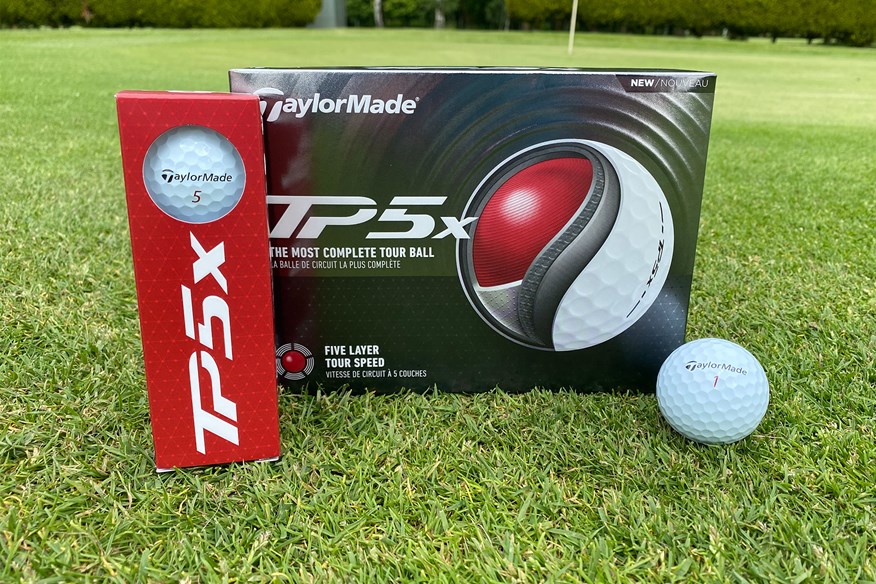

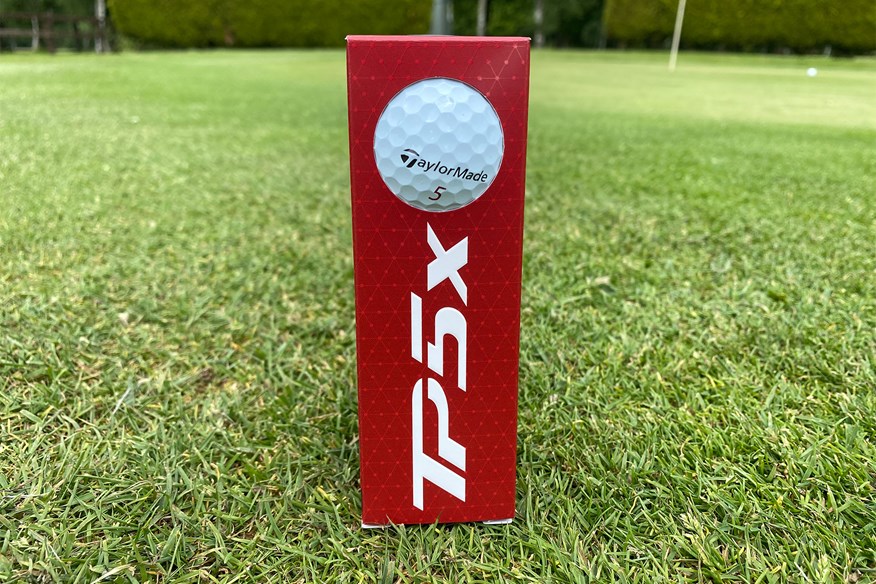
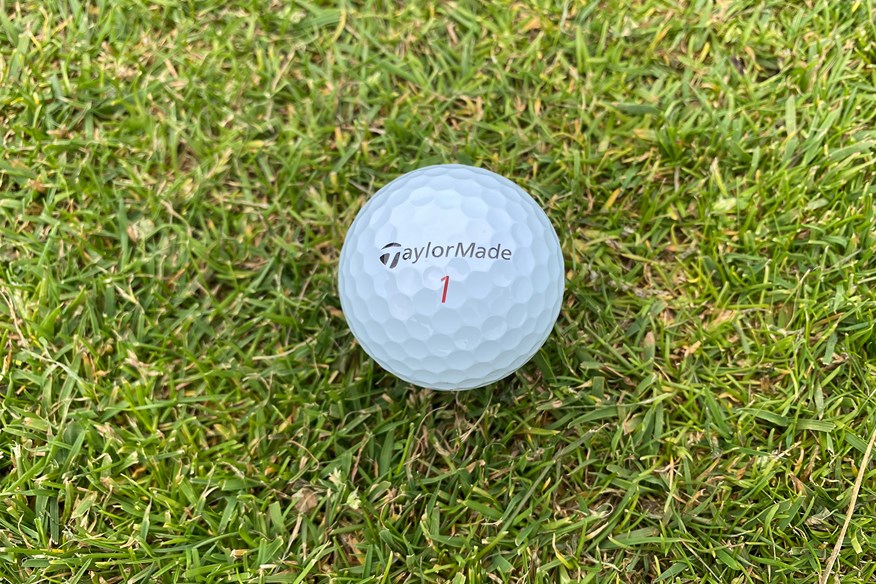
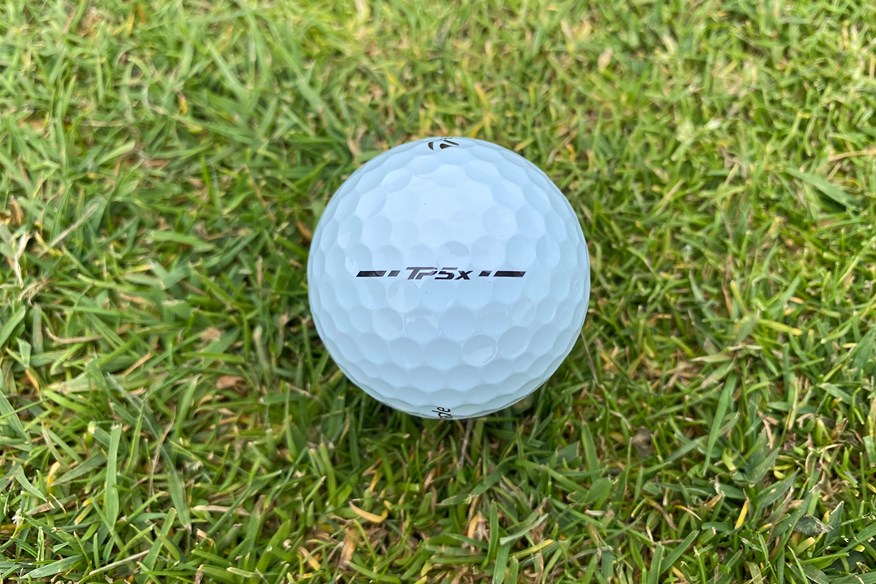
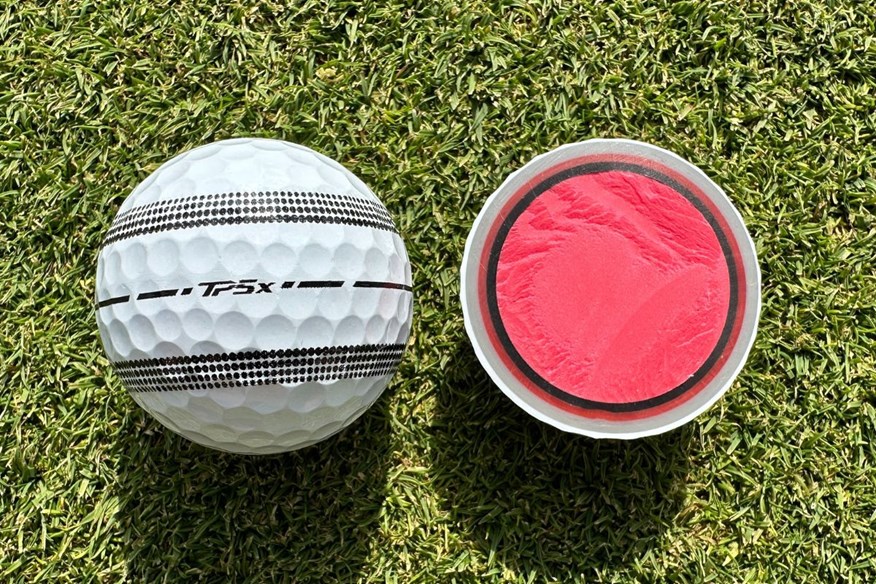
The TaylorMade TP5x steps up into a league of its own off the tee at the 78mph driver swing speed. It's a yard longer than the second-best performing golf ball and 0.4mph faster. At 93mph, TP5x is strong once again, being the fastest golf ball and the second longest.
Off-the-tee performance of the TP5x at both swing speeds is impressive, and it helps it achieve the bronze medal for off-the-tee performance. At 114mph, there is a drop-off in performance, but not enough to hinder the TP5x's overall score.
Approaching and playing around greens, the TP5x isn't as high-spinning as the TP5, but this model is sold as a low-spinning golf ball. With that in mind, it delivers a good amount of spin with the 7-iron (4,609rpm) and 40-yard pitch shots (6,042rpm).
TP5x delivers fast ball speeds, which makes it a very efficient golf ball. If you prioritise distance, the TP5x has to be in your thoughts, but not if you have a quick swing speed. If you're looking for more spin and control, I'd suggest looking at the TP5 instead.
On-course verdict
I'm very split between whether I prefer the firmer and more distance-oriented TP5x or the softer and higher-spinning TP5. If I'm being honest, my game benefits much more from a higher-spinning golf ball, so I think I have to side with Rory on this one and go for the TP5.
The reason I'm split is because I much prefer the firmer feel and response of the TP5x. I'm not particularly interested in the extra distance the TP5x offers because I'd much rather give up a couple of yards off the tee in exchange for putting the ball a couple of yards closer from the fairway.
The TP5x is well represented on Tour, despite a couple of players - including Rory - moving over to the TP5. It's clear to see why this five-piece golf ball is popular on Tour and in the amateur ranks, because it is solid from tee to green with an emphasis on eeking out a couple more yards.
I'm slightly in favour of the TP5, but if you ask me again in a couple of months, but opinion could well have changed.
Read our full TaylorMade TP5x golf ball review.
Pros
- High feedback and response
- Quality performance from tee to green
- Widely played on Tour
Cons
- Not as much short-game spin as the TP5
| Carry distance (yds) | Driver 114mph - 272.5 | Driver 93mph - 210.3 | Driver 78mph - 163.6 | 7-iron - 157.2 |
| Ball speed (mph) | Driver 114mph - 163.7 | Driver 93mph - 134.9 | Driver 78mph - 114.3 | 7-iron - 109.4 |
| Backspin (rpm) | Driver 114mph - 2,700 | Driver 93mph - 2,777 | Driver 78mph - 2,548 | 7-iron - 4,609 | Pitch - 6,042 |
| Launch angle (°) | Driver 114mph - 11 | Driver 93mph - 12.5 | Driver 78mph - 13.7 | 7-iron - 21.1 | Pitch - 29.9 |
| Descent angle (°) | Driver 114mph - 37.1 | Driver 93mph - 32.5 | Driver 78mph - 27.7 | 7-iron - 45.2 | Pitch - 35.1 |
| Peak height (yds) | Driver 114mph - 32.1 | Driver 93mph - 22.6 | Driver 78mph - 15.8 | 7-iron - 29.9 | Pitch - 6.6 |
| Compression (psi) | 117 |
- Speed-wrapped core
- Progressive 5-layer construction
- Seamless Tour flight dimple pattern
- 322 dimples
- 5-Piece construction
- Available in white only
- Alternative models include Pix, Stripe, and Limited Edition patterns
Gold medal for driver performance
Best low-spin Callaway golf ball for slow swing speeds
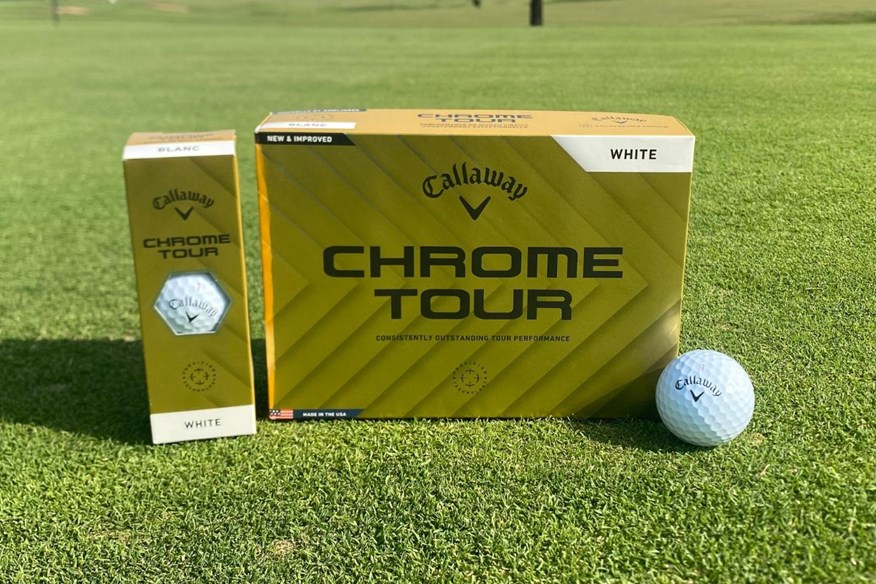

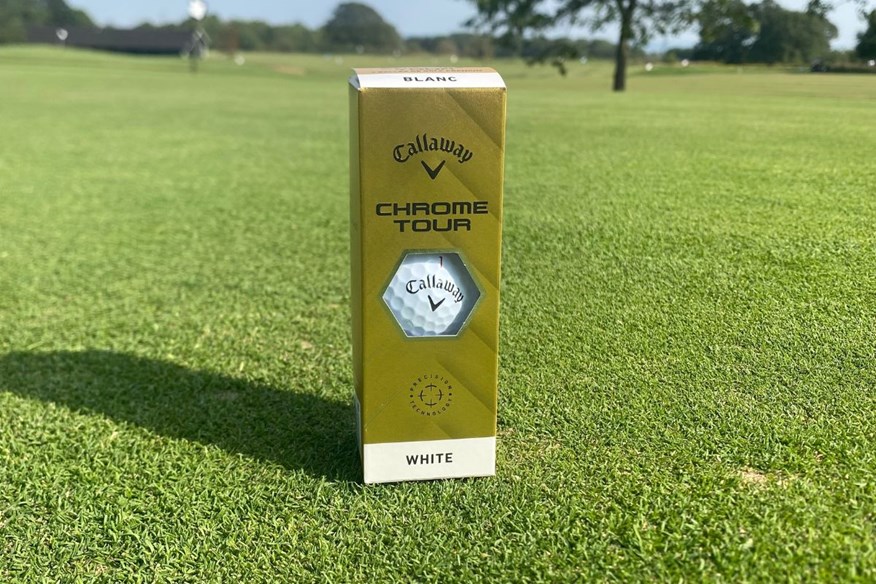
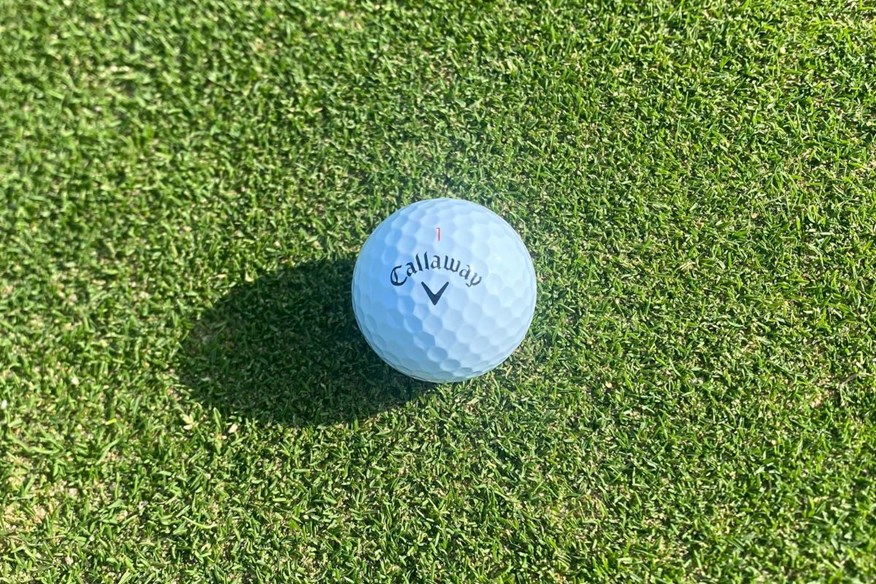
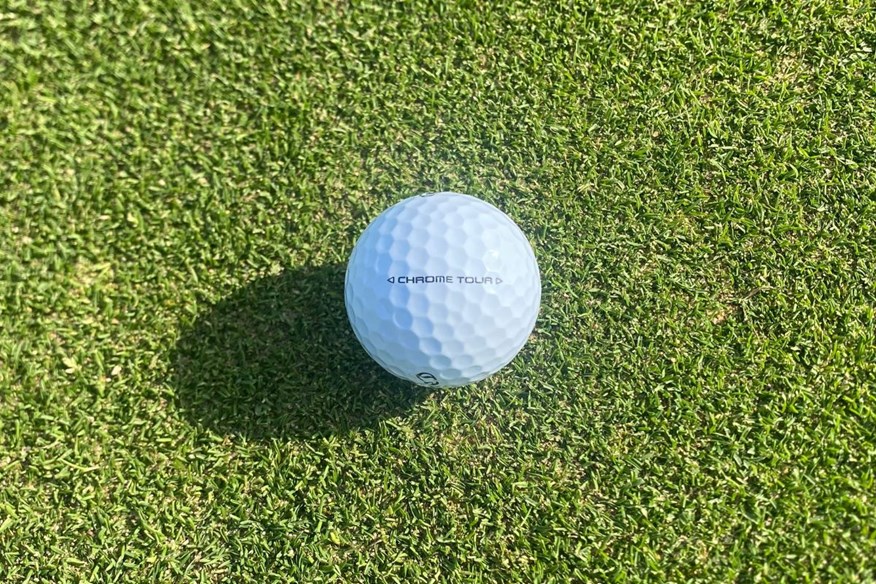
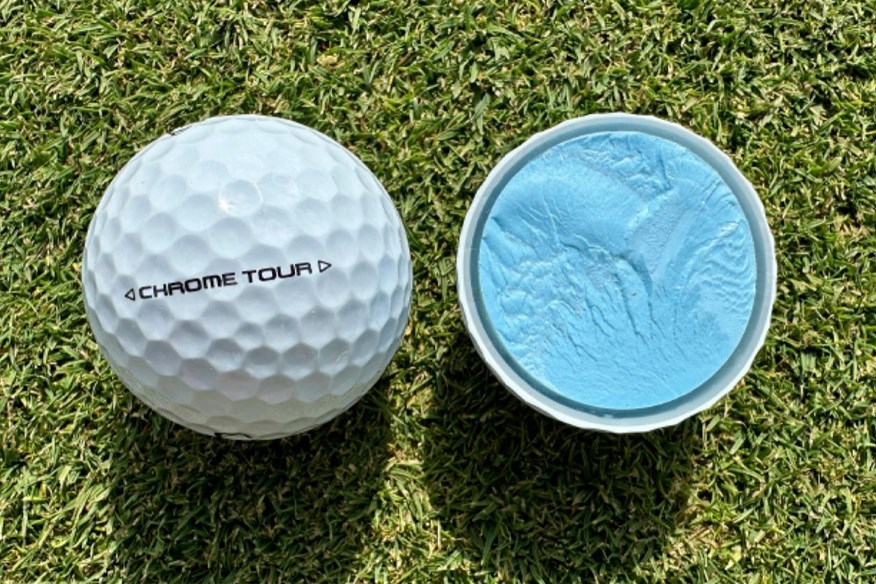
If you're looking to improve your tee game, the Callaway Chrome Tour is the ball you should choose out of all four-piece and five-piece golf balls.
At 114mph, the Callaway Chrome Tour is the fastest and longest golf ball of the entire test, being the only golf ball out of all 62 to exceed 275 carry yards. It's a similar story at 93mph, being the longest golf ball off the tee of all 62 tested.
Chrome Tour isn't as competitive with carry distance at slower swing speeds, but being lower spinning than other golf balls in this category helps to produce competitive total distance. Also, ball speed is joint-third fastest.
Where the Chrome Tour is low spinning off the tee, it's not the case approaching or playing around greens.
Chrome Tour is the complete package, and definitely a golf ball you have to consider if you want a premium, Tour-level golf ball that's fast and long off the tee, with good iron game and short game spin and control.
On-course verdict
I've had a lot of enjoyment playing with the Chrome Tour, most notably when I took this model out for a spin on The Old Course at St. Andrews. It's extremely difficult to find a negative considering it's long off the tee, high-spinning around the greens, and feels amazing.
This isn't a soft-feeling golf ball, but it's not firm either, it's somewhere in the middle, which is very pleasant because it offers great feedback as well as amazing feel.
The Chrome Tour is very strong off the tee, and it is noticeably longer than the Chrome Tour X on the course because it's not as high-spinning. The Chrome Tour is extremely popular on Tour, and it's clear to see why.
The Chrome Tour and Tour X are very closely matched, but the Chrome Tour is probably more versatile; it's just not as high-spinning when approaching and playing around greens.
Read our full Callaway Chrome Tour golf ball review.
Pros
- Impressive distance and ball speed
- Played by some of the best golfers in the game
- Very consistent golf balls
Cons
- Not as high-spinning as the Chrome Tour X
| Carry distance (yds) | Driver 114mph - 275.4 | Driver 93mph - 210.8 | Driver 78mph - 161.8 | 7-iron - 155.6 |
| Ball speed (mph) | Driver 114mph - 165.1 | Driver 93mph - 134.7 | Driver 78mph - 113.4 | 7-iron - 108.7 |
| Backspin (rpm) | Driver 114mph - 2,689 | Driver 93mph - 2,701 | Driver 78mph - 2,508 | 7-iron - 4,658 | Pitch - 6,036 |
| Launch angle (°) | Driver 114mph - 11 | Driver 93mph - 12.7 | Driver 78mph - 13.9 | 7-iron - 20.9 | Pitch - 30.1 |
| Descent angle (°) | Driver 114mph - 37.3 | Driver 93mph - 32.5 | Driver 78mph - 27.6 | 7-iron - 44.9 | Pitch - 35.2 |
| Peak height (yds) | Driver 114mph - 32.6 | Driver 93mph - 22.7 | Driver 78mph - 15.7 | 7-iron - 29.4 | Pitch - 6.5 |
| Compression (psi) | 113 |
- Hyper fast soft core
- Seamless Tour aero
- High-performance Tour urethane soft cover
- 332 dimples
- 4-Piece construction
- Available in white and yellow
- Alternative models include Triple Track, 360° Triple Track, TruTrack, and Limited Edition patterns
Best golf balls for slow swing speeds: Robot test data
View the full golf ball robot test results.
| Golf ball | Wilson Staff Model X | Srixon Z-Star Diamond | Wilson Staff Model | Callaway Chrome Tour X | TaylorMade TP5 | Seed SD-02 | Srixon Z-Star | Srixon Z-Star XV | TaylorMade TP5x | Callaway Chrome Tour |
| Compression | 114 | 106 | 112.0 | 111.0 | 104.0 | 104.0 | 92 | 112 | 117.0 | 113 |
| 78mph Driver Ball Speed (mph) | 113.4 | 113.1 | 113.3 | 113.0 | 113.9 | 113.4 | 113.1 | 113.2 | 114.3 | 113.4 |
| 78mph Driver Launch Angle (°) | 13.8 | 13.6 | 13.9 | 13.5 | 13.6 | 14.0 | 13.7 | 13.6 | 13.7 | 13.9 |
| 78mph Driver Backspin (rpm) | 2623 | 2719 | 2595 | 2921 | 2676 | 2484 | 2693 | 2654 | 2548 | 2508 |
| 78mph Driver Carry Distance (yds) | 162.2 | 161.0 | 161.7 | 160.8 | 162.6 | 162.4 | 161.1 | 160.8 | 163.6 | 161.8 |
| 78mph Driver Height (yds) | 15.9 | 15.7 | 15.8 | 16.0 | 15.8 | 15.9 | 15.8 | 15.5 | 15.8 | 15.7 |
| 78mph Driver Descent Angle (°) | 28.1 | 28.1 | 28.0 | 28.8 | 28.1 | 27.8 | 28.1 | 27.7 | 27.7 | 27.6 |
| 7-Iron Ball Speed (mph) | 109.3 | 108.7 | 109.0 | 108.7 | 109.6 | 109.5 | 108.7 | 108.7 | 109.4 | 108.7 |
| 7-Iron Launch Angle (°) | 21.0 | 20.5 | 21.1 | 20.3 | 20.7 | 21.3 | 20.8 | 20.7 | 21.1 | 20.9 |
| 7-Iron Backspin (rpm) | 4782 | 5149 | 4653 | 5242 | 4823 | 4397 | 4937 | 4930 | 4609 | 4658 |
| 7-Iron Carry Distance (yds) | 156.1 | 153.1 | 156.3 | 152.5 | 156.3 | 158.7 | 154.1 | 154.2 | 157.2 | 155.6 |
| 7-Iron Height (yds) | 30.0 | 29.3 | 29.8 | 29.1 | 29.8 | 30.0 | 29.5 | 29.3 | 29.9 | 29.4 |
| 7-Iron Descent Angle (°) | 45.4 | 45.3 | 45.2 | 45.3 | 45.3 | 45.0 | 45.3 | 45.2 | 45.2 | 44.9 |
| 40-Yard Pitch Ball Speed (mph) | 46.3 | 46.3 | 46.4 | 46.2 | 47.1 | 46.6 | 46.6 | 46.3 | 46.3 | 45.9 |
| 40-Yard Pitch Launch Angle (°) | 30.4 | 30.0 | 30.6 | 29.5 | 30.0 | 30.9 | 30.6 | 30.3 | 29.9 | 30.1 |
| 40-Yard Pitch Backspin (rpm) | 6091 | 6137 | 5993 | 6343 | 6100 | 5845 | 5926 | 5948 | 6042 | 6036 |
| 40-Yard Pitch Carry Distance (yds) | 39.6 | 39.3 | 39.8 | 38.8 | 40.7 | 40.3 | 40.1 | 39.5 | 39.3 | 38.8 |
| 40-Yard Pitch Height (yds) | 6.7 | 6.5 | 6.8 | 6.3 | 6.8 | 7.0 | 6.9 | 6.7 | 6.6 | 6.5 |
| 40-Yard Pitch Descent Angle (°) | 35.5 | 35.1 | 35.8 | 34.4 | 35.4 | 36.4 | 35.9 | 35.6 | 35.1 | 35.2 |
Best golf balls for slow swing speeds: Buying guide
Ability
Ability won’t come into play as much as it does if you’re solely looking for a golf ball that works with your swing speed. What I mean by this is, you could be playing off 24 or 2.4, and if you have a slow swing speed, then you’re better off playing with a golf ball known to help golfers with slow swing speeds than one based on your ability.
That being said, you can still pick a golf ball for slow swing speeds based on your ability if you wish. Potentially to your surprise, the majority of the best golf balls for slow swing speeds are the best premium golf balls. However, if you don’t want to spend over $50 on a dozen balls, you can find value in this category.
Budget
Although many of the best golf balls for slow swing speeds are also the best four- and five-piece golf balls and the best three-piece golf balls, it doesn’t matter whether your budget is £30 or £50; you’ll be able to play with one of the best golf balls in this category.
It probably goes without saying, but the tighter budget you’re working to when buying golf balls is going to restrict the amount of extra performance they’ll provide. For instance, if you choose to play with the Pinnacle Soft, it will inevitably have less tee-to-green performance than the Wilson Staff Model X because of its design and construction.
Therefore, if you can, I would strongly suggest budgeting tighter elsewhere and spending money on golf balls.
Performance
Determining whether you need a golf ball for slow swing speeds wholly depends on how fast you swing a golf club. It’s not entirely irrelevant to any other factor, but that is undoubtedly the most important. The best way to find out your swing speed is by hitting shots on a trusted launch monitor that you know will give you accurate numbers.
The beauty of working solely with swing speed data is that it’s completely irrelevant to how you’re striking the ball. Dependent on how well you strike the ball will influence which of the best golf balls for slow swing speeds you opt for (or not, based on your findings).
Feel
Feel is for many golfers a non-negotiable. The majority of golfers enjoy playing with a soft-feeling golf ball. Most golf balls on the market are soft, it’s very rare to come across a rock that you have been accustomed to playing with in years gone by. Even a firm-feeling golf ball like the Wilson Staff Model X is soft compared to those hard golf balls that used to exist.
Even the best distance golf balls are designed to be soft at impact because the brands understand this is what most golfers want. To play with a good-feeling golf ball, you don’t need to spend an obscene amount of money, but feel isn’t everything. You might enjoy the feeling of a golf ball, but if it doesn’t send the ball home in fewer shots, then it’s not the ball for you.
Spin
Some golf balls generate spin more easily than others, and this is dependent on their composition. Golf balls sporting more layers will naturally behave better on the greens because spin comes from the layers reacting with one another. However, that doesn’t make premium golf balls built of four or five layers spin ridiculously off the tee because the technology is massively refined, so the spin is optimal off the tee and when attacking pins. This is what makes them such a good option for golfers with slow swing speeds.
Cheaper golf balls tend to be made up of two layers, and this is why they tend to be lower spinning in the short game but remain competitive with distance off the tee. Another factor that influences spin is cover material; many of the best cheap golf balls, best distance golf balls, and best golf balls for beginners and high-handicappers feature a Surlyn or ionomer cover, which creates less friction with the clubface than a urethane cover, which can be found on the best premium golf balls and best golf balls for mid-handicappers.
A common misconception in golf is that golfers view spin as a negative if it creeps up. However, in most instances, spin is your friend. Therefore, choosing one of the best high-spin golf balls could have a better impact on your game if your spin is naturally low. However, if you struggle to tame the golf ball, then opting for one of the best low-spin golf balls could prove beneficial.
Distance
My opinion is that distance is the least important factor to consider when choosing a golf ball. However, if you’re a golfer with a slow swing speed, then distance could be really important for you.
There are multiple ways you can increase distance, and a golf ball is most likely going to be the quickest, easiest, and cheapest way of doing so. However, you could also add distance – if you have a slow swing speed – by carrying out swing training, building muscle, or playing with a lighter shaft.
Alignment
There are many golf balls that are now being produced with enhanced alignment aids printed on them. There are many brands offering golf balls with alignment aids varying in size and style. I would personally recommend giving one a go just to discover if it benefits your game. What’s the harm in trying?
Color
Many golfers resort to the traditional white golf ball, but it is often the case now that manufacturers offer their golf balls in at least one or more colors, so you can pick the ball you can see best. Colorful golf balls make for some of the best winter golf balls because of their enhanced visibility.
I know of some golfers who view coloured golf balls as being inferior to white golf balls (nonsense), even when they are the exact same golf ball. No one likes losing a golf ball, so pick the colour you can see best and start saving your scores and money.
Best Golf Balls for Slow Swing Speeds: FAQs
What to read next
For performance insights tailored to your swing speed and preferences, head to our results hubs:
- Best 4 and 5-piece golf balls
- Best 3-piece golf balls
- Best 2-piece golf balls
- Best golf balls for fast swing speeds
- Best golf balls for average swing speeds
- Best golf balls for distance
- Best golf balls for approach play
- Best golf balls for short game
- Best golf balls for mid-handicaps
- Best golf balls for beginners
- Most consistent golf balls
